The new Toyota HiLux will be one of the biggest reveals of 2025, a chance to strike back at the Ford Ranger that in recent times has stolen its status as dual-cab top dog.
While concrete details are still scarce, here you’ll find everything we know about the new HiLux, including speculative renderings and all recent articles, so check back regularly as more information comes to light.
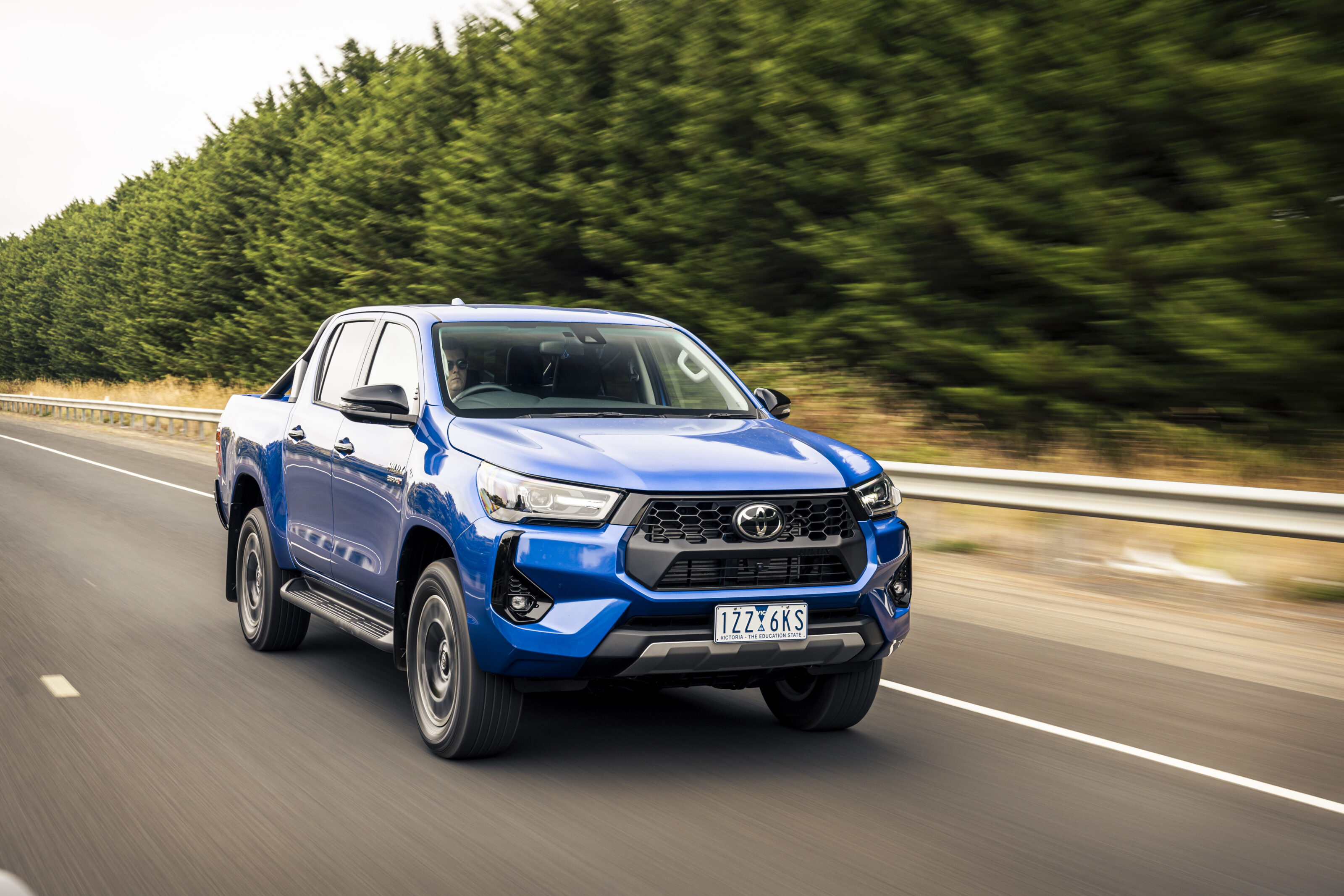
Will there be an electric Toyota HiLux?
It’s a question of when, not if, an electric HiLux arrives, however just who’s able to buy it is another issue. Toyota Australia has partnered with mining giant BHP on a 12-month trial of a battery electric dual-cab prototype (pictured, below) which, if successful, could see a battery-powered HiLux fast-tracked into showrooms.
Plans are in place to mass produce an electric HiLux in Thailand by the end of 2025, but this is a rear-wheel drive, single-cab model shown and driven by media locally in 2023.
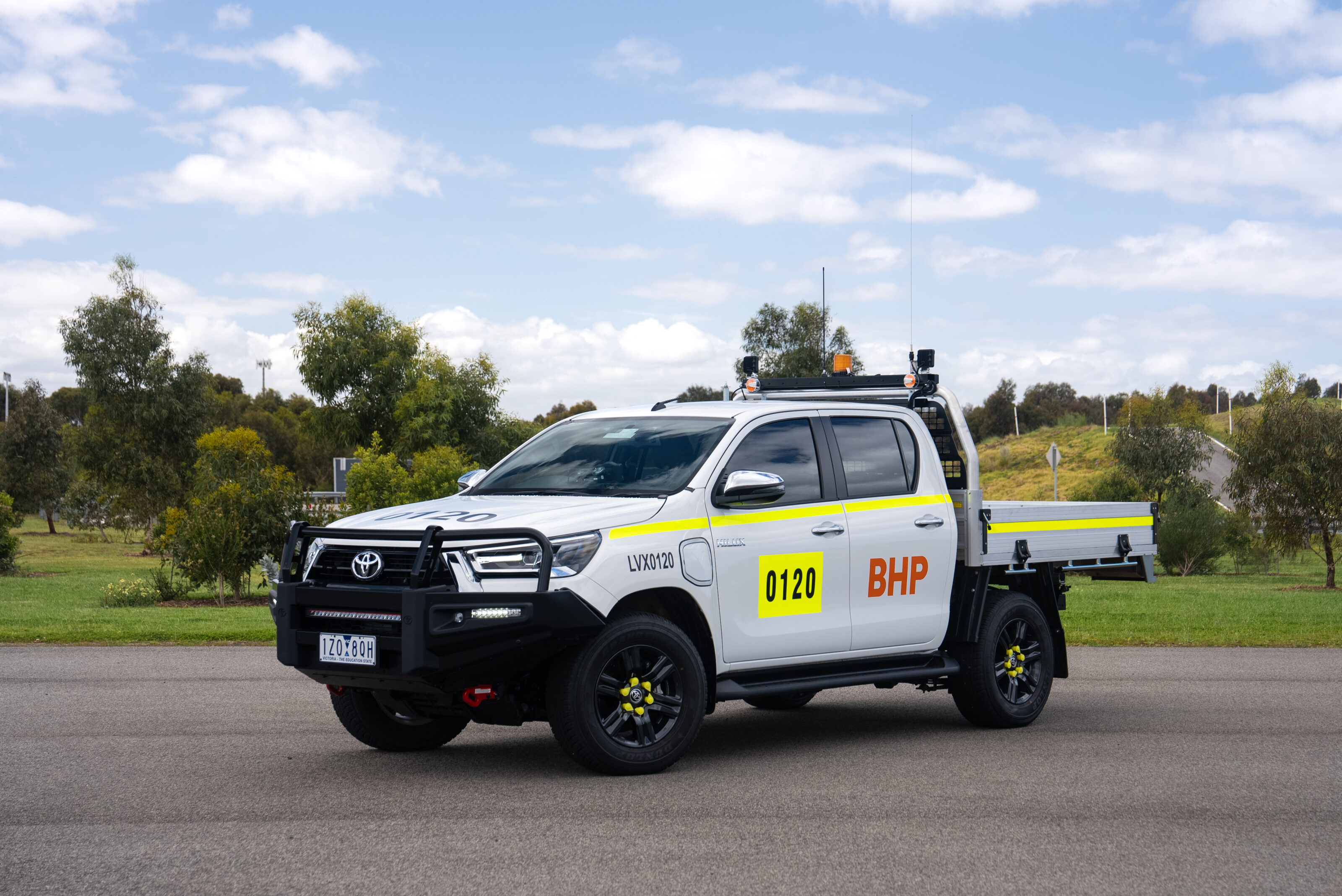
Toyota Australia’s vice president of sales, marketing and franchise operations, Sean Hanley, has previously told WhichCar that an electric HiLux or LandCruiser won’t suit the “silent majority” of Australians until they can tow 3.5 tonnes and have loaded ranges of 700-800km.
Another path is for Toyota to introduce a separate electric ute, based on the EPU concept revealed at the 2023 Japan Mobility Show, a model Hanley said Toyota Australia would be putting its hand up for.
When will the new Toyota HiLux be revealed?
Initially, the new Toyota HiLux, seen here in our speculative renderings, was expected to make its first public appearance at the 2025 Bangkok Motor Show in late March, especially as that is its country of origin.
However, a recent report out of Brazil suggests that while the new-gen HiLux will still appear in 2025, it won’t be on sale until 2026.
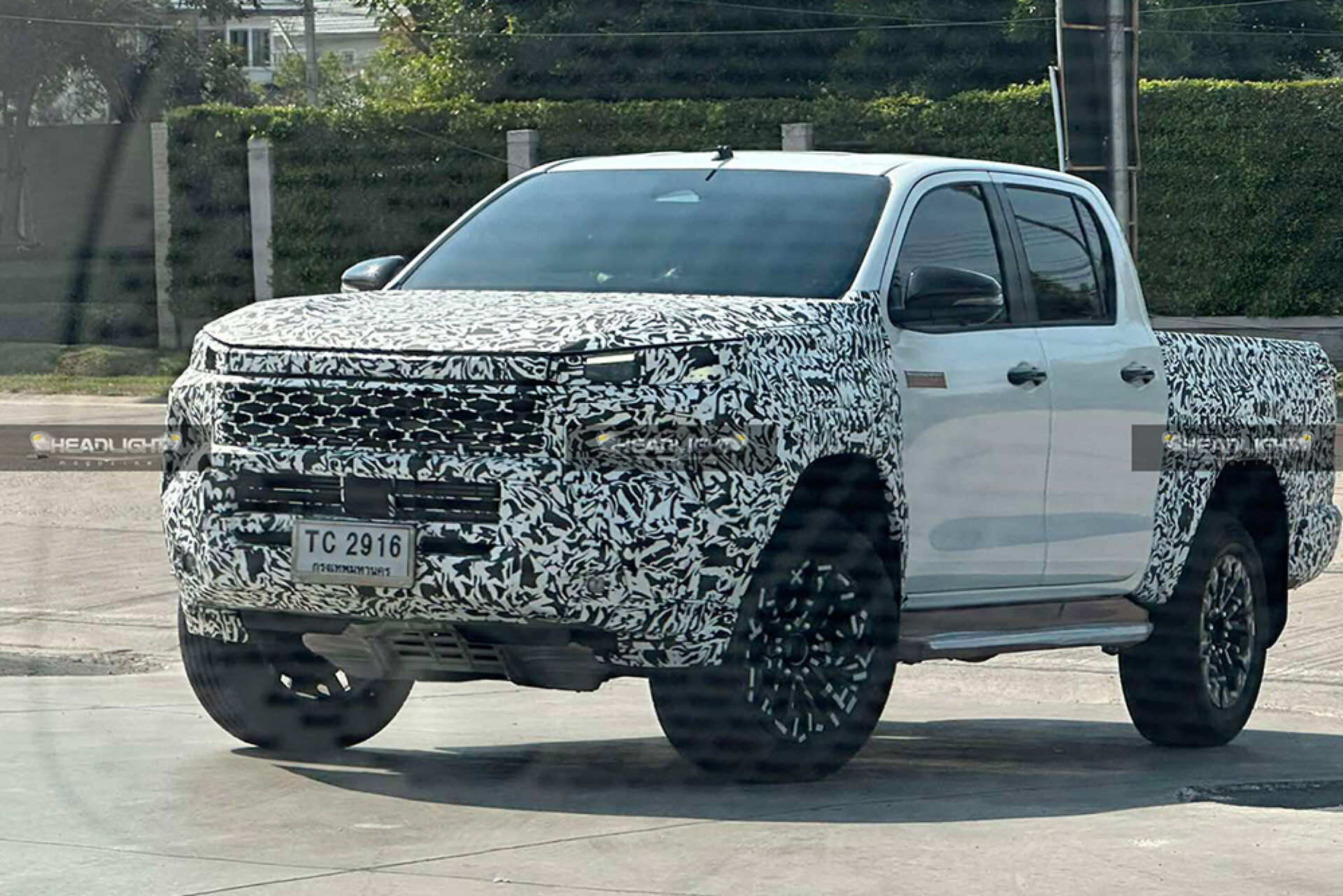
Furthermore, rather than adopting Toyota’s latest TNGA-F platform that underpins the Tacoma, Prado, 300-Series and Tundra, the report also claims the new HiLux will use a revised version of the current chassis called IMV.
Lending credence to this report is the fact that Toyota recently invested heavily in the current HiLux, widening the tracks, overhauling the suspension and adopting rear disc brakes for the Rogue and GR Sport models.
What will power the 2026 Toyota HiLux?
Those wanting an underbonnet revolution for the new HiLux are likely to be disappointed, in the short term at least.
The smart money is on the current 2.8-litre four-cylinder turbo-diesel mild-hybrid carrying over, which produces 150kW/500Nm, though like the new Prado that shares the engine, expect a new eight-speed auto to replace the current six-speeder.
However, as the New Vehicle Efficiency Standards get increasingly stringent as the 2020s progress, Toyota will have to adopt more efficient powertrains.
A likely target will be the 2.4-litre turbo-petrol hybrid dubbed i-FORCE MAX in the Toyota Tacoma (pictured, below). Petrol emits less CO2 than diesel, while the hybrid powertrain will also give the new HiLux a sizeable performance increase, producing a combined 243kW/630Nm.
An all-electric Toyota HiLux is an inevitability and is almost certain to appear within the next generation’s lifespan, however it is likely to be 2030 at the earliest.
How about a Toyota Prado ute?
With the 70-Series LandCruiser potentially on borrowed time, we reckon a Prado-based, retro-flavoured ute would be the perfect replacement.
Our speculative renderings show how the long-serving 70-Series could be given a modern makeover, like the one Land Rover has successfully applied to the Defender.
New Toyota Tacoma to form basis for HiLux
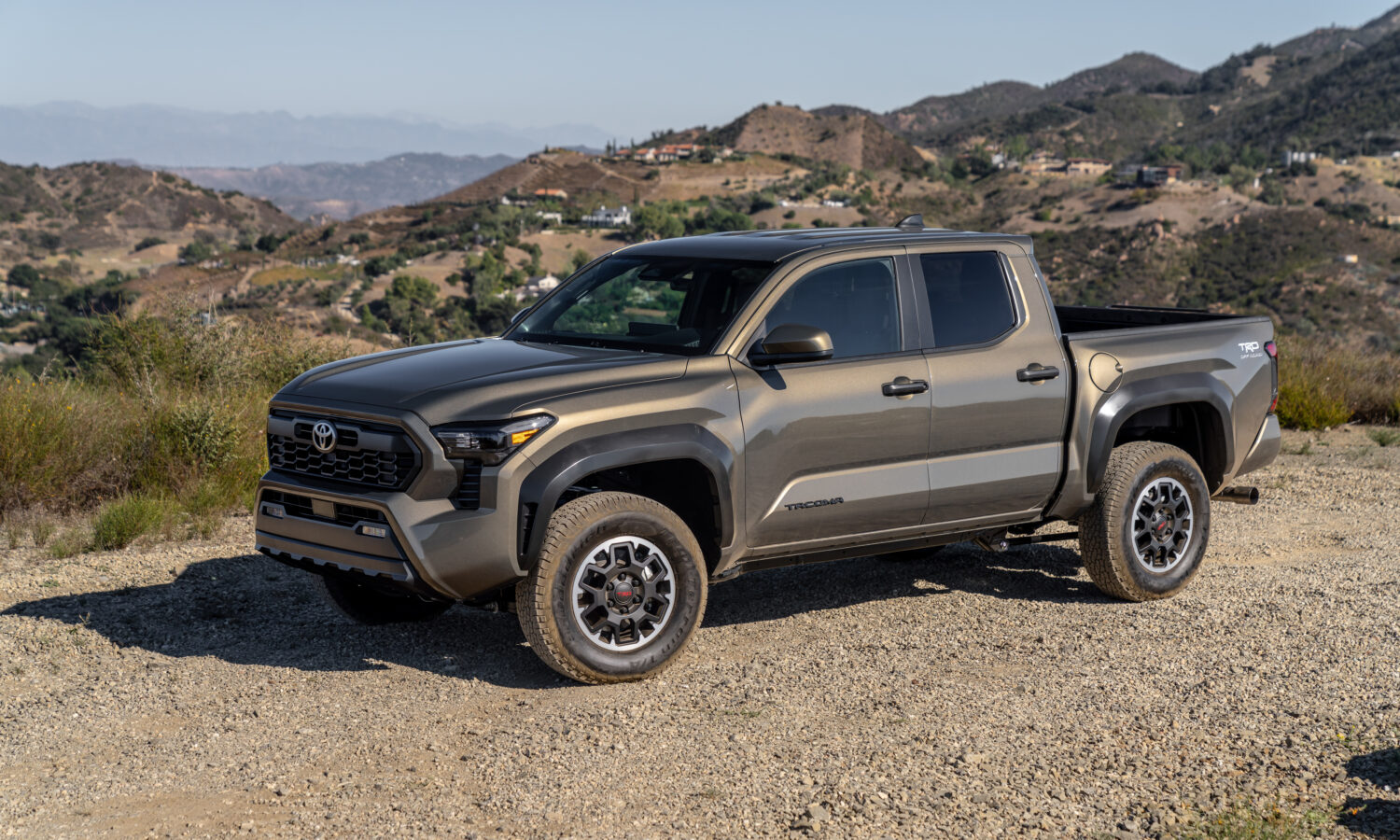
Here’s the new Toyota Tacoma, the US mid-sizer (as opposed to the full-size Tundra) that sits on the TNGA-F platform, which is expected to underpin the next-generation HiLux.
TNGA-F improves rigidity thanks to new developments in laser welding and an aluminium upper body section reduces weight. As with the new Prado, electrically assisted power steering will replace the current hydraulic setup.
The Tacoma’s rear end is typically conventional leaf springs but has been engineered to use a multi-link coil setup, something that could come in handy if Toyota wants to get serious about taking on the Ford Ranger Raptor with a proper performance hero.
While America’s aversion to diesel means the base engine for the Tacoma is a 2.4-litre four-cylinder turbo-petrol producing between 170kW/329Nm and 207kW/430Nm depending on spec, an electrified version of the engine could be a possibility for HiLux.
This teams the 2.4 with a 1.87kWh battery pack to produce 243kW/630Nm, as well as improved fuel economy. The HiLux is also likely to lean on the Tacoma for design inspiration, both inside and out, in addition to its more modern technology, including a digital instrument cluster of up to 12.4 inches and a touchscreen infotainment system of up to 14 inches with wireless smartphone mirroring.
Replacing the previous CX-9 in the company’s global line-up, the Mazda CX-90 represents a new era for Mazda. It sits on a new rear-biased platform, it uses a range of new six-cylinder powerplants with mild-hybrid tech and even the eight-speed automatic gearbox is new.
There are three variants available in Australia for now, and each one is well equipped and suitably premium inside. And they would want to be, as the top-spec Azami sits at over $100,000 once on-road costs are included in the price. Here’s everything you need to know.
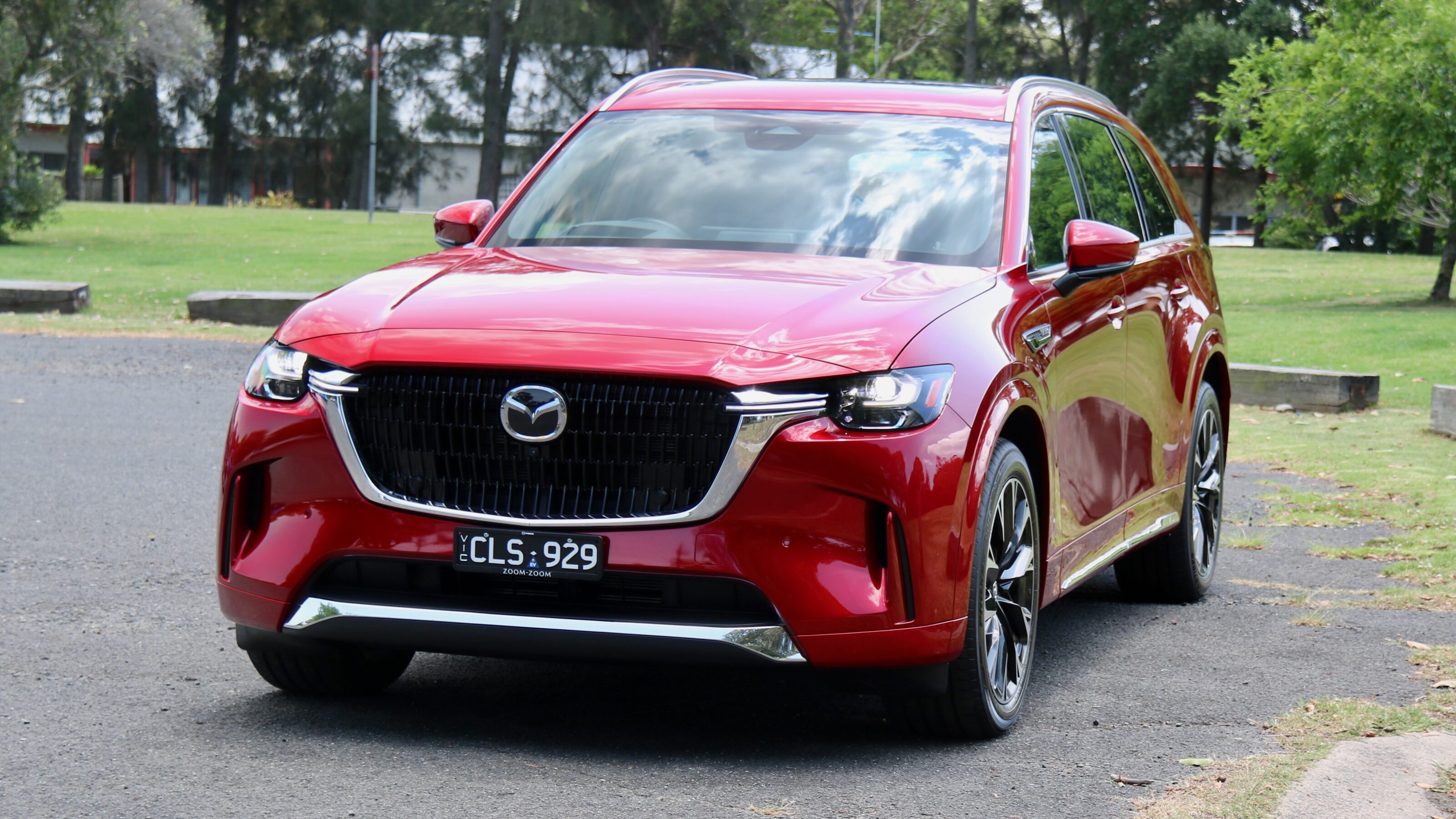
How much does the Mazda CX-90 cost?
Most CX-90 variants sold in Australia feature seven seats, though option packages with six-seats are available on the top-spec Azami. The CX-90 is otherwise offered as a five-door wagon. Regardless of the model chosen, a new 3.3-litre turbocharged inline six-cylinder engine is available: either a 254kW/500Nm petrol until or a 187kW/550Nm diesel. Both use an eight-speed automatic transmission and feature a rear-biased all-wheel drive system.
| Touring petrol AWD | $74,550 |
|---|---|
| Touring diesel AWD | $76,550 |
| GT petrol AWD | $85,530 |
| GT diesel AWD | $85,550 |
| Azami petrol AWD | $94,630 |
| Azami diesel AWD | $93,515 |
| GT diesel AWD | $85,550 |
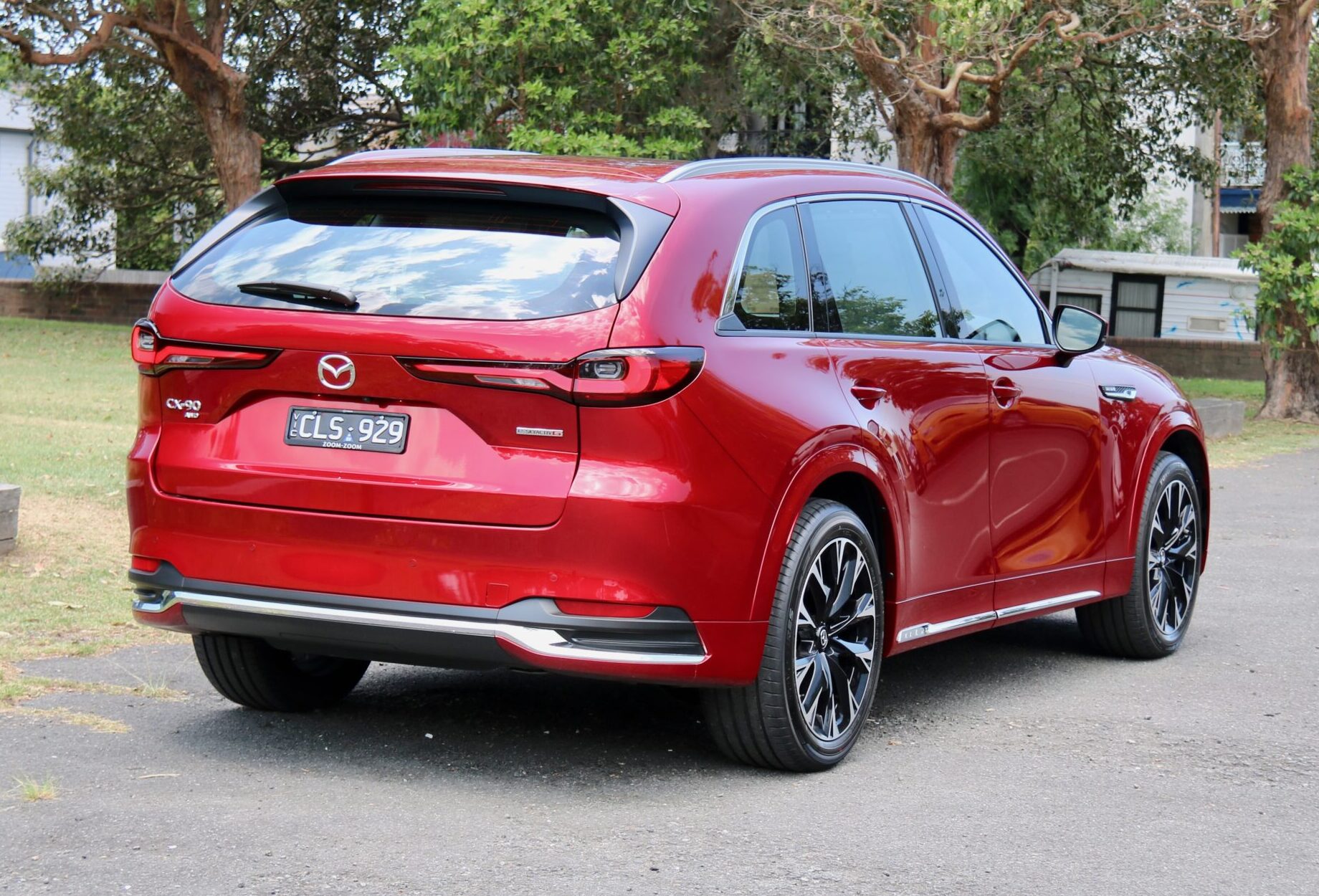
What features are standard in the Mazda CX-90?
All CX-90 models in Australia are equipped with the following features (unless replaced in higher-spec models):
- 19-inch alloy wheels with a space-saver spare wheel
- Dusk-sensing automatic LED exterior lighting
- Rain-sensing automatic wipers
- 10.25-inch infotainment screen with ‘Mazda Connect’ software
- Auto-dimming rear mirror
- Hands-free electric tailgate
- Leather steering wheel and gear knob
- 8-speaker sound system
- Heated front seats
- Satellite navigation
- 7.0-inch digital driver’s display
- Heated, auto-dimming and auto-folding exterior mirrors
- Keyless entry and push button start
- Tri-zone automatic climate control
- Wireless and wired Apple CarPlay and Android Auto
- Wireless phone charger
- Leather upholstery
- 10-way driver/8-way passenger electric front seats with driver’s seat memory
- AM, FM and DAB+ digital radio
- Rear door inbuilt sunshades
- 150W AC outlet
- Roof rails
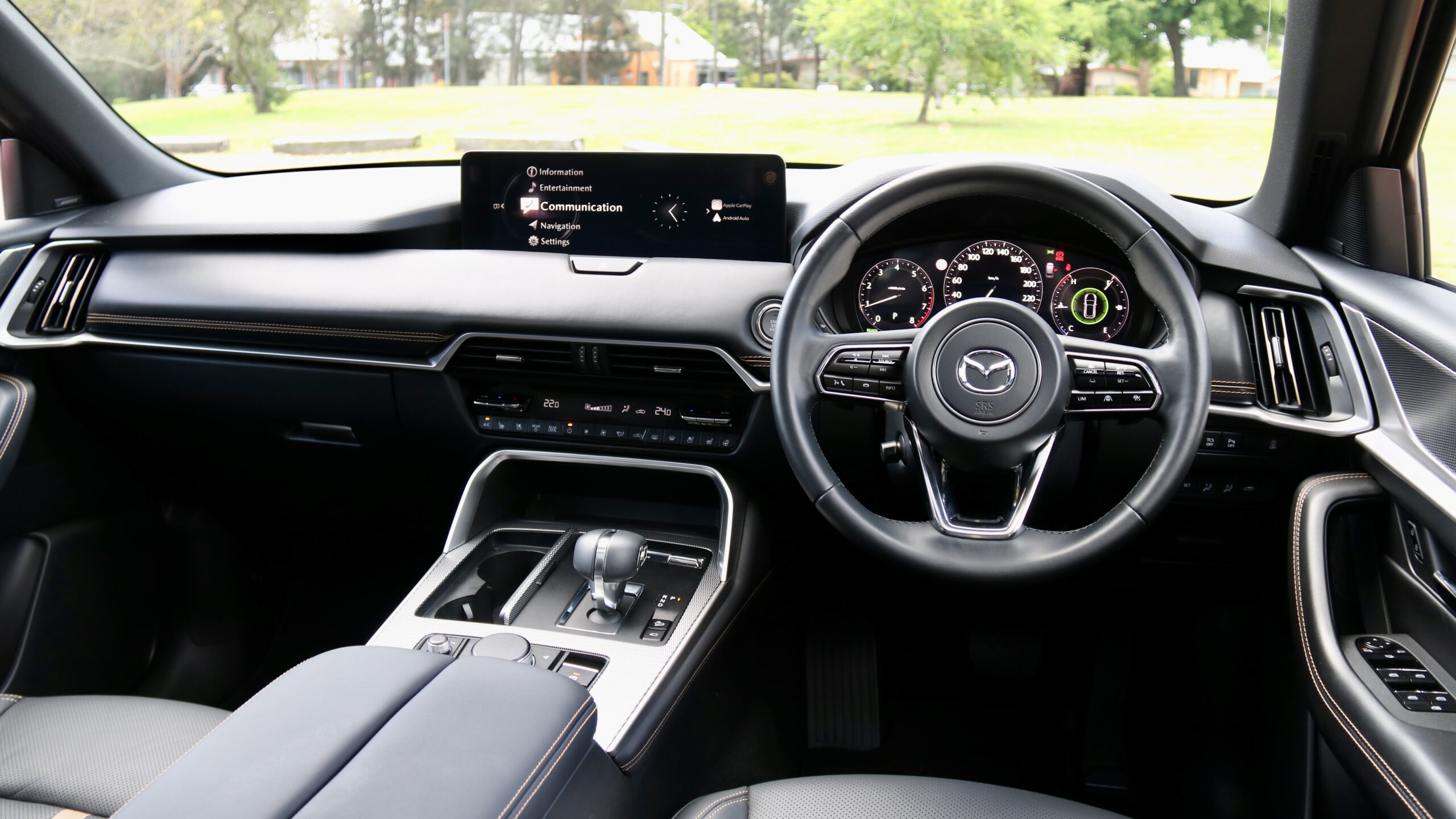
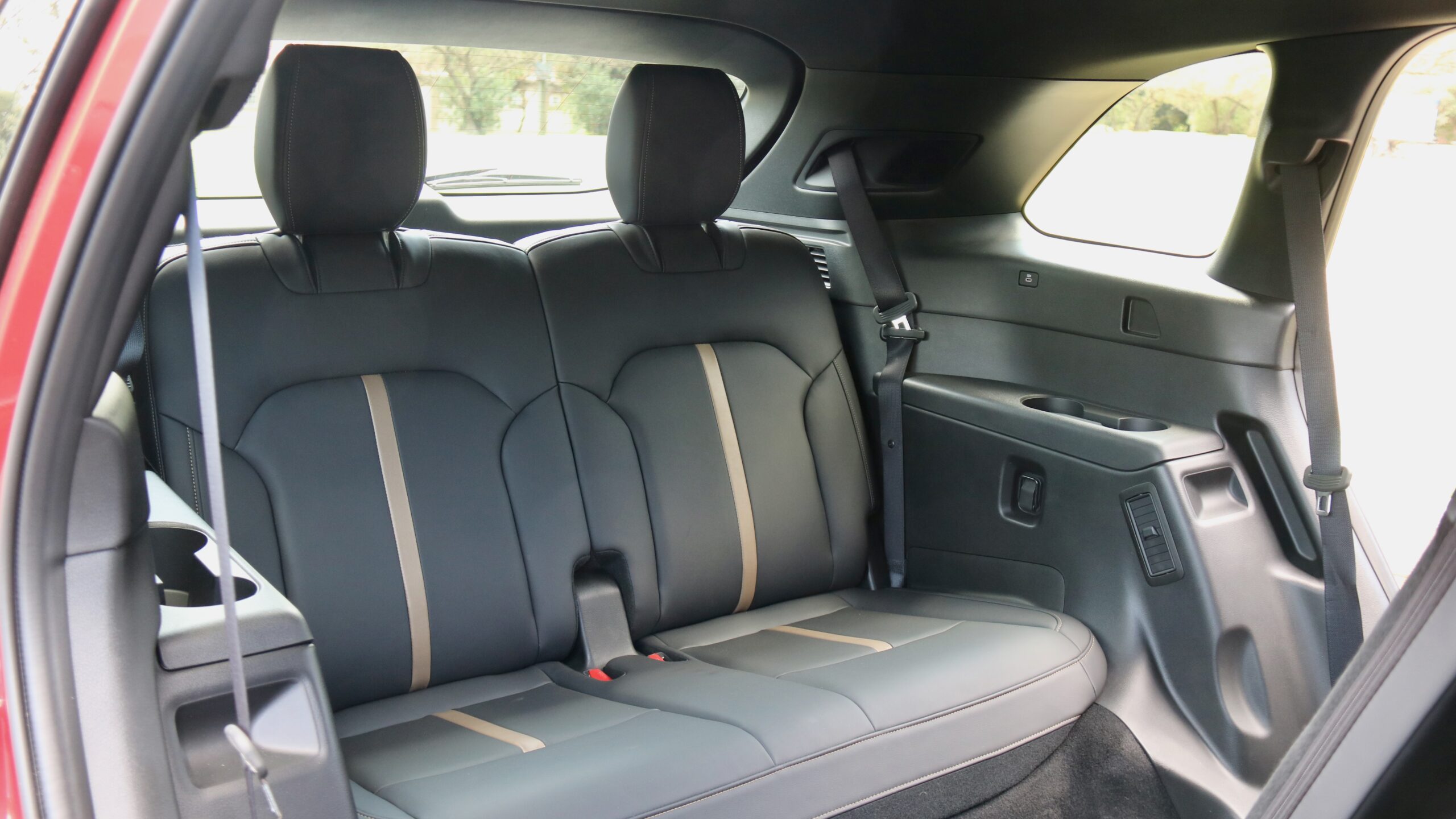
What do I get if I pay more?
Above the entry-level Touring are the mid-spec GT and top-spec Azami, which are available with the same drivetrains as the base model.
CX-90 GT features (in addition to Touring):
- 12.3-inch infotainment screen
- 21-inch alloy wheels
- Electric steering wheel adjustment
- Heated outboard middle row seats
- High-level LED exterior lighting
- Front footwell and rear door lighting
- 12.3-inch digital driver’s display
- Matrix adaptive high beam
- Heated steering wheel
- 12-speaker Bose sound system
- Panoramic sunroof
- Personalisation system with auto restoration of settings
CX-90 Azami features (in addition to GT):
- 21-inch black metallic and machined wheels
- Interior ambient lighting
- Body-coloured wheel arches and lower cladding
- Frameless interior mirror
- 360-degree camera with ‘see-through’ view
- Nappa leather upholstery
- Ventilated front seats
- Easy entry electric driver’s seat
Is the CX-90 available with any optional extras?
Optional Takumi Package (Azami) adds:
- Pure white nappa leather upholstery
- Cloth dashboard panel with Japanese ‘Kakenui’ stitching
- Second row captain’s chairs with ventilation (reduces seating capacity to six)
- Bright decoration panel
- White maple wood console and door trim inserts
- Second row centre console with storage
Optional SP Package (Azami) adds:
- Tan nappa leather upholstery
- Suede dashboard panel
- Second row captain’s chairs with ventilation (reduces seating capacity to six)
- Dual-colour tan and black steering wheel
- Second row centre console with storage
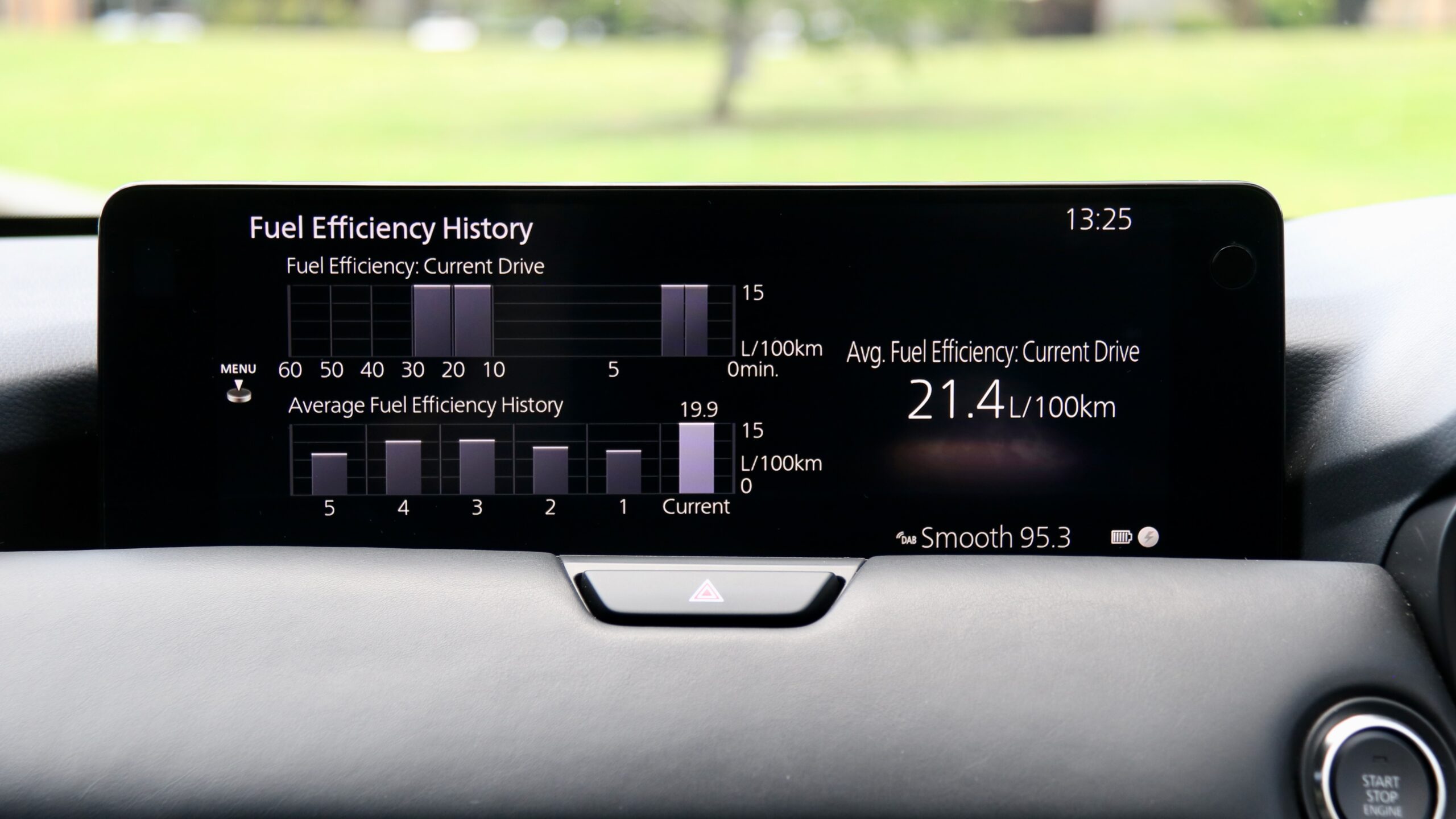
How safe is the Mazda CX-90?
The CX-90 is yet to be tested by ANCAP for safety, but the closely related – and slightly smaller – CX-80 just received a five-star rating.
All variants include 10 airbags (including a front centre and driver’s knee airbags and side units for the middle row) and a comprehensive list of active safety features, including autonomous emergency braking (AEB), adaptive cruise control with stop and go functionality, traffic sign recognition, front and rear cross-traffic alert (with braking), driver attention monitoring, blind-spot monitoring, vehicle exit warning, lane keeping assistance with lane departure warning, a head-up display, front and rear parking sensors, a 360-degree camera and auto high beam.
The GT adds Matrix adaptive high beam and the Azami further adds adaptive lane guidance and traffic jam assist.
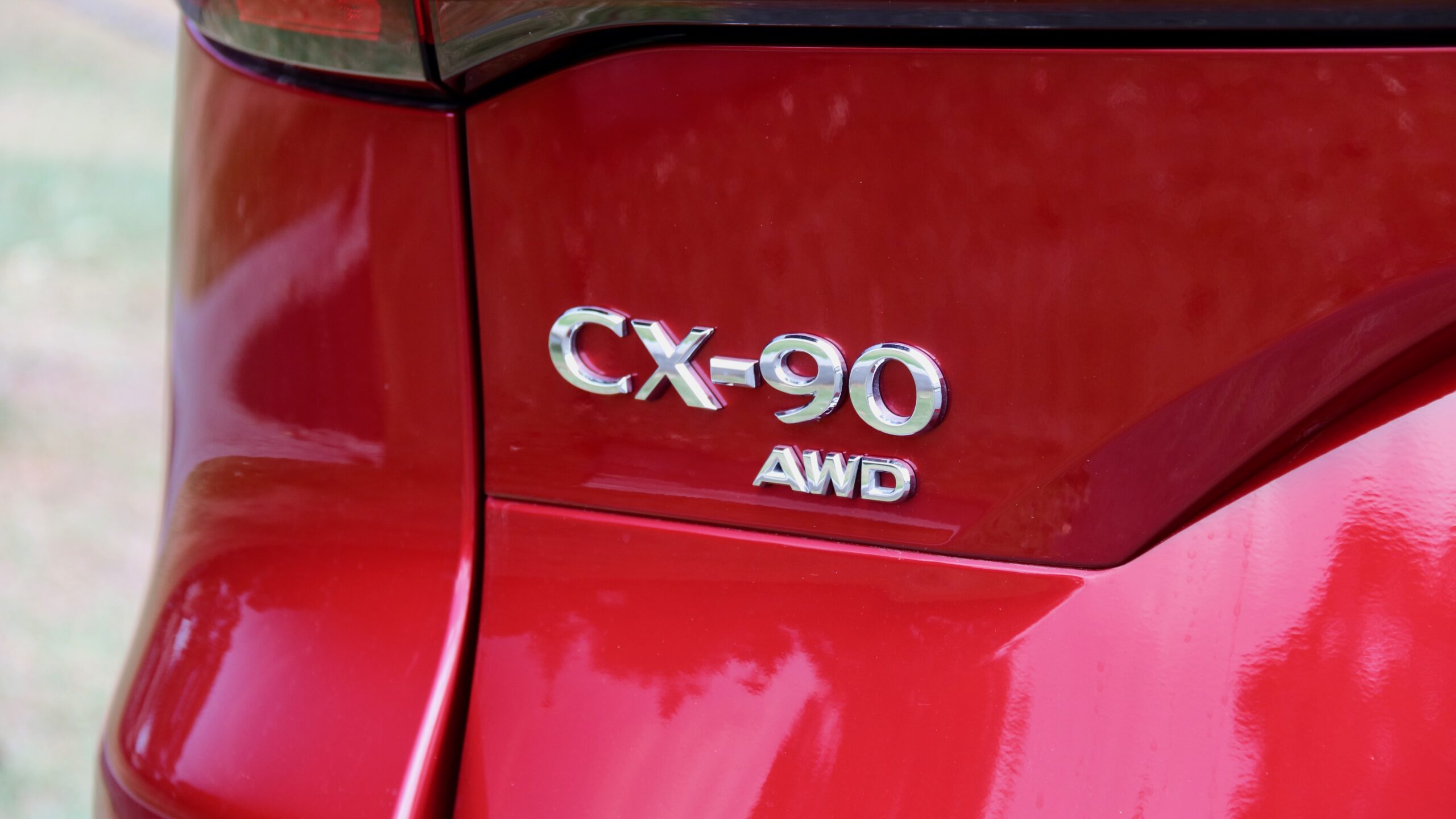
How comfortable and practical is the Mazda CX-90?
As we’ve seen from modern Mazdas, the cabin of the CX-90 is comfortable and premium-feeling, but also spacious for seven people. While this is Mazda’s most expensive product, the materials and dashboard layout is almost identical to the smaller and less expensive CX-60. If the most luxurious cabin experience is important to you, choose one of the option packages on the Azami because both add another layer of luxury finishing.
In the top-spec Azami, the nappa leather is of great feel and while an XC90 has better material quality, the CX-90 still features plenty of soft touch surfaces. But the entry-level Touring’s quality is also pretty good – there’s less layering and less soft touch, but it still feels expensive. The CX-90’s cabin could be more practical as its cupholders aren’t massive, and nor is the box underneath the centre armrest, but the door bins are large and the glovebox is as well.
Centre of the dashboard is – depending on the spec – either a 10.25-inch or 12.3-inch infotainment screen that is controlled by a wheel located on the centre console, which Mazda says is safer because your eyes aren’t taken far off the road to control it. If parked with the handbrake on, it’s also controlled by touch but we wish it was able to be controlled by both the wheel and touch as using smartphone mirroring with the wheel is cumbersome.
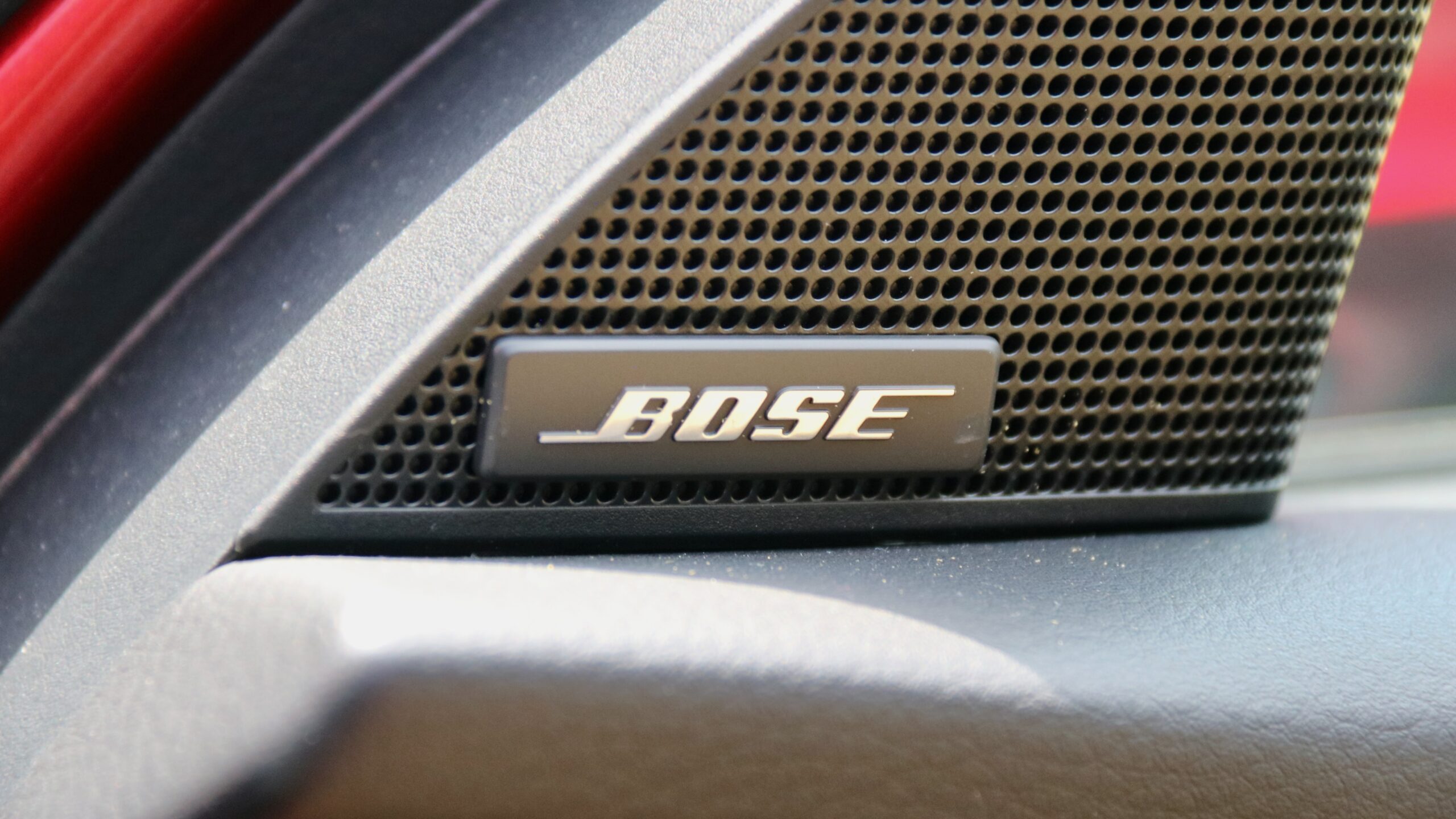
In both the Mazda3 and CX-30, you can always control the Apple CarPlay and Android Auto on the screen via touch, and we wish that this functionality was expanded to the larger SUVs in the Mazda line-up like the CX-90.
Front seat comfort is reasonable and features heating across the range and ventilation in the Azami, though the seats are a bit flat and should offer more adjustment for the price. Passenger space in a Volvo XC90 is superior in all rows, though the CX-90’s second and third row is still reasonably spacious and features a third climate zone, heated outboard middle row seats, inbuilt window shades, charging ports, air vents and airbag coverage. The second row both slides and reclines, and access to the third row is good, thanks to an effective seat folding mechanism.
How large is the Mazda CX-90’s boot?
Behind the third row of the CX-90 lies 257litres of bootspace, which is increased to 608L with the third row folded and 2025L (to the ceiling) with the second row folded as well. Once the both rear rows of seating are folded, there is a flat floor, easily allowing for long items to be transported.
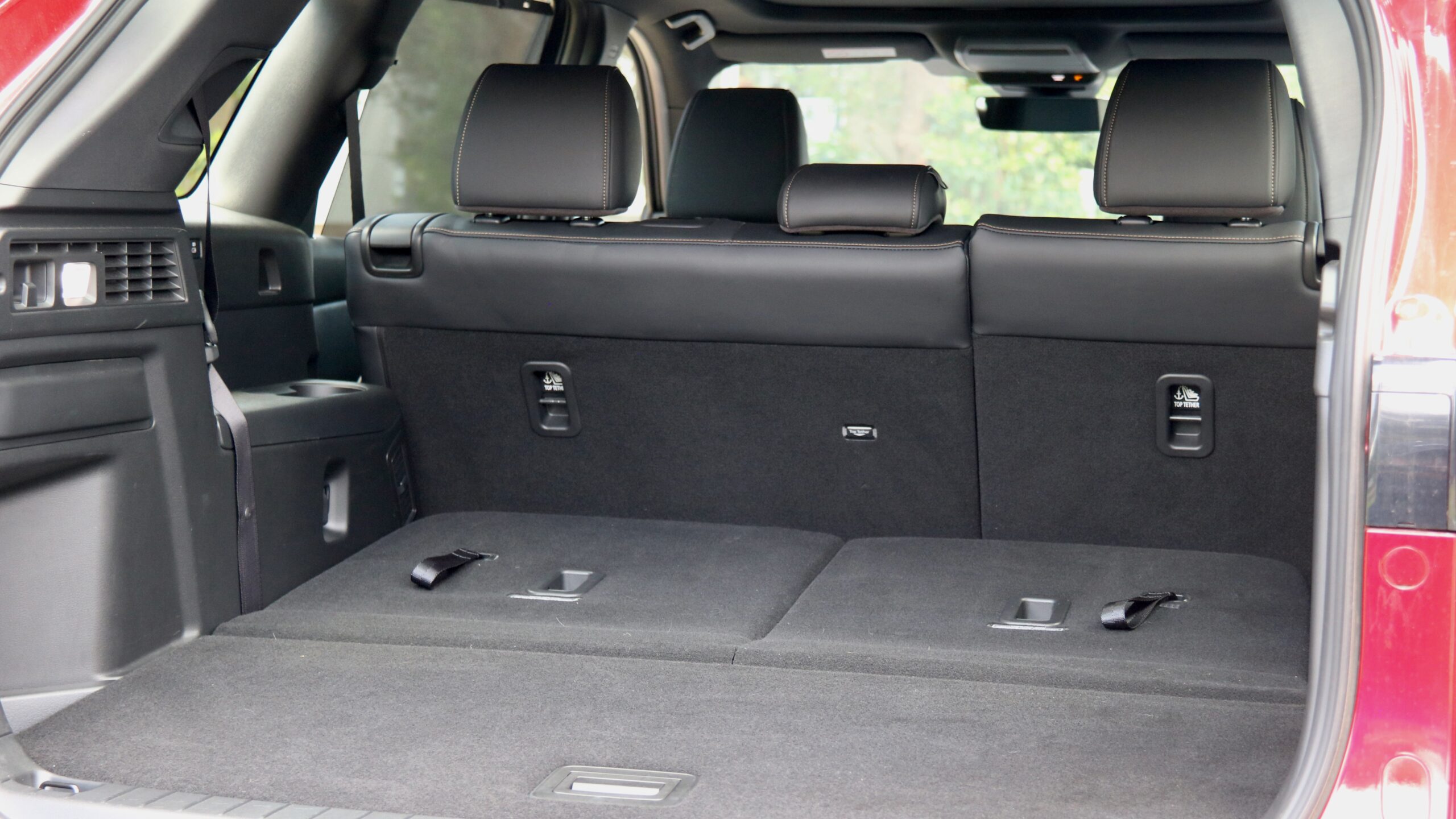
I like driving – will I enjoy the Mazda CX-90?
As we’ve seen from Mazda products of the past few decades, the CX-90 is a keen handler for such a big bus. Its ride is firmer than rivals, particularly in the GT and Azami with their larger 21-inch wheels, but rewards keen drivers with a good chassis that’s capable of putting smiles on faces. The steering can be a bit heavy in urban conditions and three-point turns can take more muscle effort than needed, but in spirited driving, it’s well-weighted and offers a good amount of feel for a large SUV.
Both drivetrains offer great performance, good economy when you’re not on it and pretty good refinement as well. Mazda improved both the drivetrains from when first released in the CX-60 so that the gearbox is a lot smoother and the transition from the mild-hybrid system powering the car to the engine is a lot less noticeable. With 254kW of power on offer, the petrol model is quick (its claimed 0-100km/h time is under seven seconds) and it sounds pretty good as well. The diesel also impresses as its full 550Nm is available from just 1500rpm, meaning you’re almost always in the full torque band for smooth and grunty progress.
Is the Mazda CX-90 expensive to run?
Thanks to the new generation of engines and a standard 48-volt mild-hybrid system, the claimed fuel consumption for the CX-90 is impressive: just 5.4L/100km for the diesel and 8.2L/100km for the petrol with CO2 emissions of 143g/km for the diesel and 189g/km for the petrol. In our experience, urban-only driving the petrol resulted in a figure of 10.5L/100km – anybody with memories of the V6 first-generation CX-9 and its horrendous fuel consumption will sigh in relief. On a road trip, the CX-90 diesel did 5.6L/100km, which is excellent for such a large vehicle.
All CX-90 variants are covered by a five-year/unlimited kilometre warranty with five years of roadside assistance. Five years of capped price servicing is expensive, and ranges from $3,299 for the diesel to $3,469 for the petrol – that’s a yearly average of $660 for the diesel and $693 for the petrol. While the diesel initially looks less expensive to maintain, its annual service intervals are 5,000km less than the petrol at 10,000km, so those travelling more than 10,000km in the diesel will have to account for an extra service or two in the first five years of ownership.
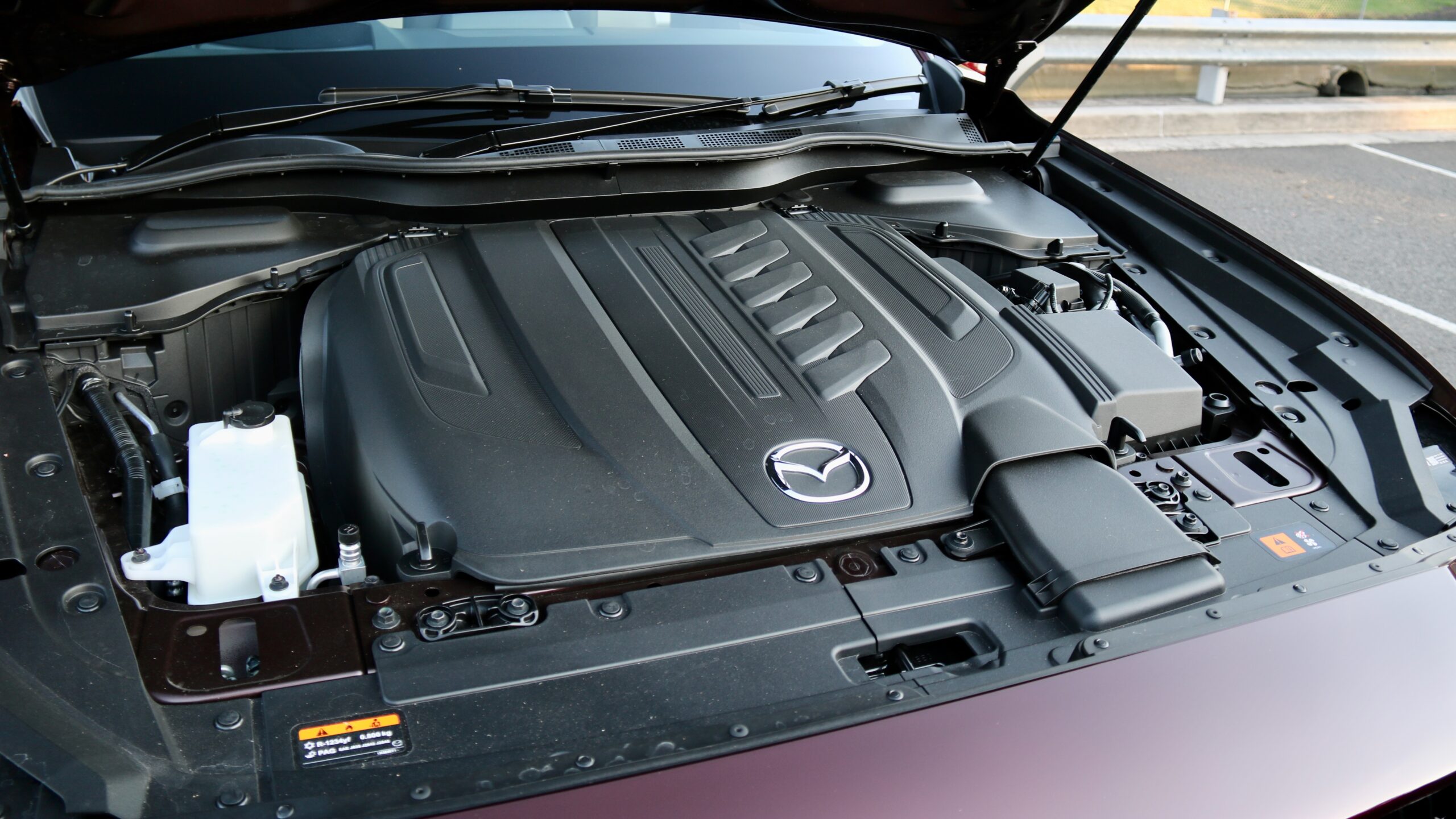
Which Mazda CX-90 variant is best?
The whole CX-90 range represents solid buying for those needing a large SUV that drives well, offers a range of punchy and efficient drivetrains and a spacious and premium cabin. To find a better option, buyers would have to spend at least $10,000 (plus options) more on a Volvo XC90.
Even the entry-level Touring is very well equipped with features like leather upholstery, tri-zone climate control and a full suite of active safety features. Importantly, the sweet powerplants is offered across the range so that those who can’t afford the GT or Azami won’t feel shortchanged.
Which vehicles rival the Mazda CX-90?
We’re regularly told by car makers that Australians love a performance car and that local sales are some of the highest in the world, yet it’s legally impossible to drive such a car at its limit here. Most urban areas have speed limits of 50 or 60km/h – but some are even lower at just 30km/h in school and high-density pedestrian zones, all in the name of safety.
Despite our seemingly endless battle against speeding, Australia faces an uphill battle when it comes to its road toll. Sadly, 1327 people were involved in fatal road crashes in 2024 and that’s the fourth year in a row of increased deaths on our roads. That’s a situation that the Australian Automobile Association (AAA) reports has not been seen since 1966 – before the introduction of compulsory seat belts.
Latest data also revealed that the National Road Safety Strategy (2021-2030) is failing to meet its goal of halving road deaths by 2030 – instead, they have surged 18.5 per cent since its launch. According to experts, there are a number of reasons for this increase, including the larger cars that are being bought by Australians these days.
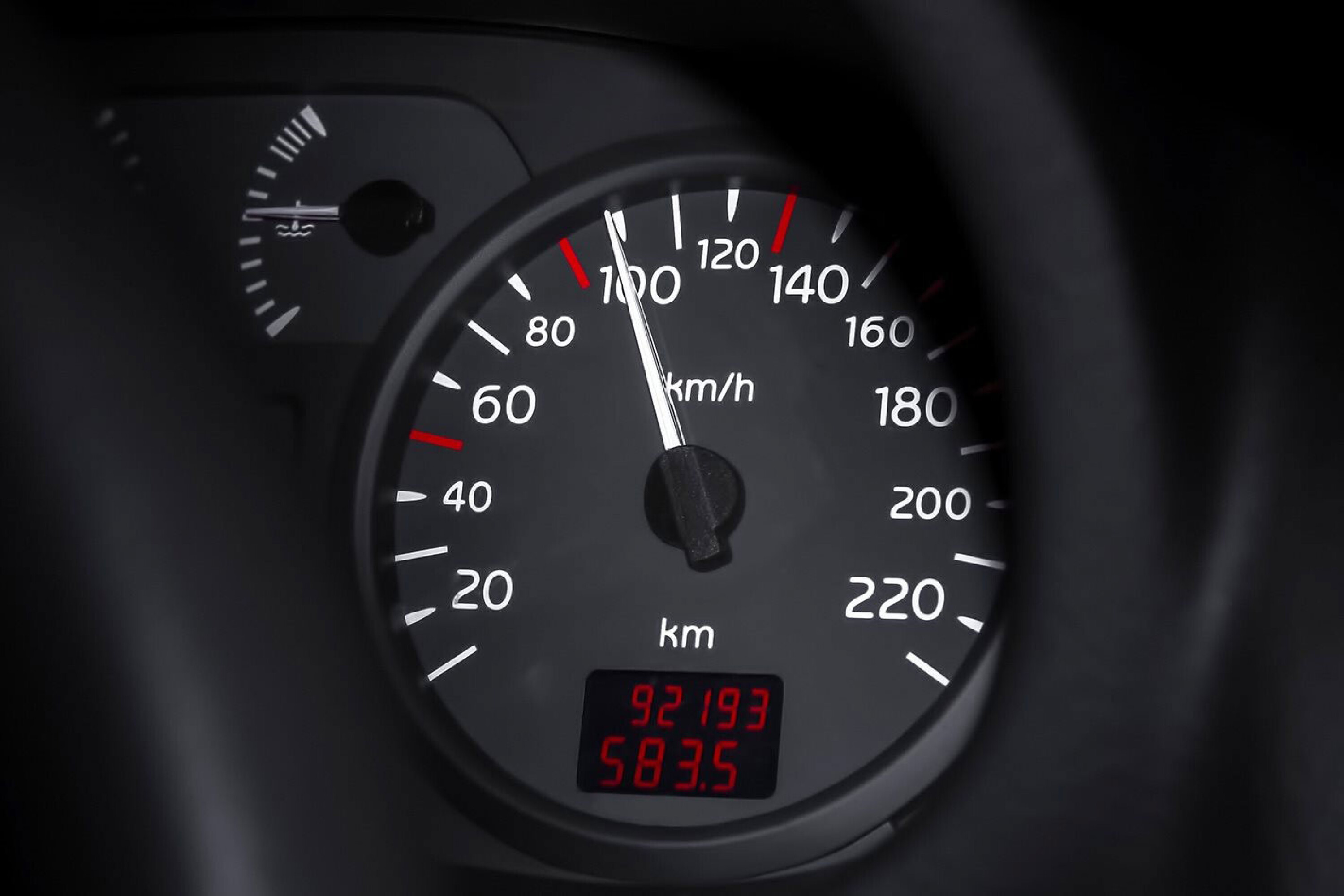
But speed is also one of the main reasons and there’s more than enough evidence backing lowering speed limits in certain areas to reduce the road toll: in 2023, Wales reduced its urban speed limit from 30mph (50km/h) to 20mph (30km/h) and in just three months, the casualties on local roads dropped by 26 per cent.
If any online story about speed limits many Aussies will complain that their country has some of the lowest speed limits in the world and they are constantly monitored by authorities as part of a revenue raising exercise.
But is that true? There maybe some truth to the desire of authorities to raise easy revenue but does Australia really have some of the lowest speed limits in the world? The answer may surprise you.
Speed limits around the world:
| Location | Maximum speed limit |
|---|---|
| Isle of Man, UK and some parts of the German autobahn | Unrestricted |
| Abu Dhabi | 160km/h |
| Saudi Arabia, Turkey, Kazakhstan, Iraq, Poland, Bulgaria and Texas, USA | 140km/h |
| Italy, France, Austria, Argentina, the Netherlands, Denmark, Russia and the Northern Territory | 130km/h |
| South Korea, India, Brazil, Thailand, Finland, Spain, Portugal, Ireland, South Africa and Japan | 120km/h |
| The UK, most states in the USA, Taiwan, Hong Kong, New Zealand, Malaysia, Mexico and Australia (outside the NT) | 110km/h |
| Indonesia, Peru, Mali, Lesotho, Ethiopia, Myanmar, Columbia and the Phillipines | 100km/h |
| Yemen, Iceland, Chad and Tajikistan | 90km/h |
| Madagascar, Honduras, Faroe Islands and Bolivia | 80km/h |
| Greenland, Liberia, Bhutan and Papua New Guinea | 70km/h (or less) |
While there are a number of developed countries that have higher limits than us, Australia clearly does not have the lowest speed limits in the world and our 110km/h limit in most states is shared with some of our closest international friends like New Zealand, the UK and most states in the USA.
Even the 130km/h limit that applies on some roads in the Northern Territory ranks highly on the global speed limit list, sharing space with countries like Italy, France, the Netherlands, Denmark and Russia.
Of course, there will always be some wanting to go faster than that – and a race track is the perfect place to do it – but some of the lowest speed limits in the world? Australia could be a lot slower.
Should Australia have higher – or lower – speed limits? Leave a comment below.
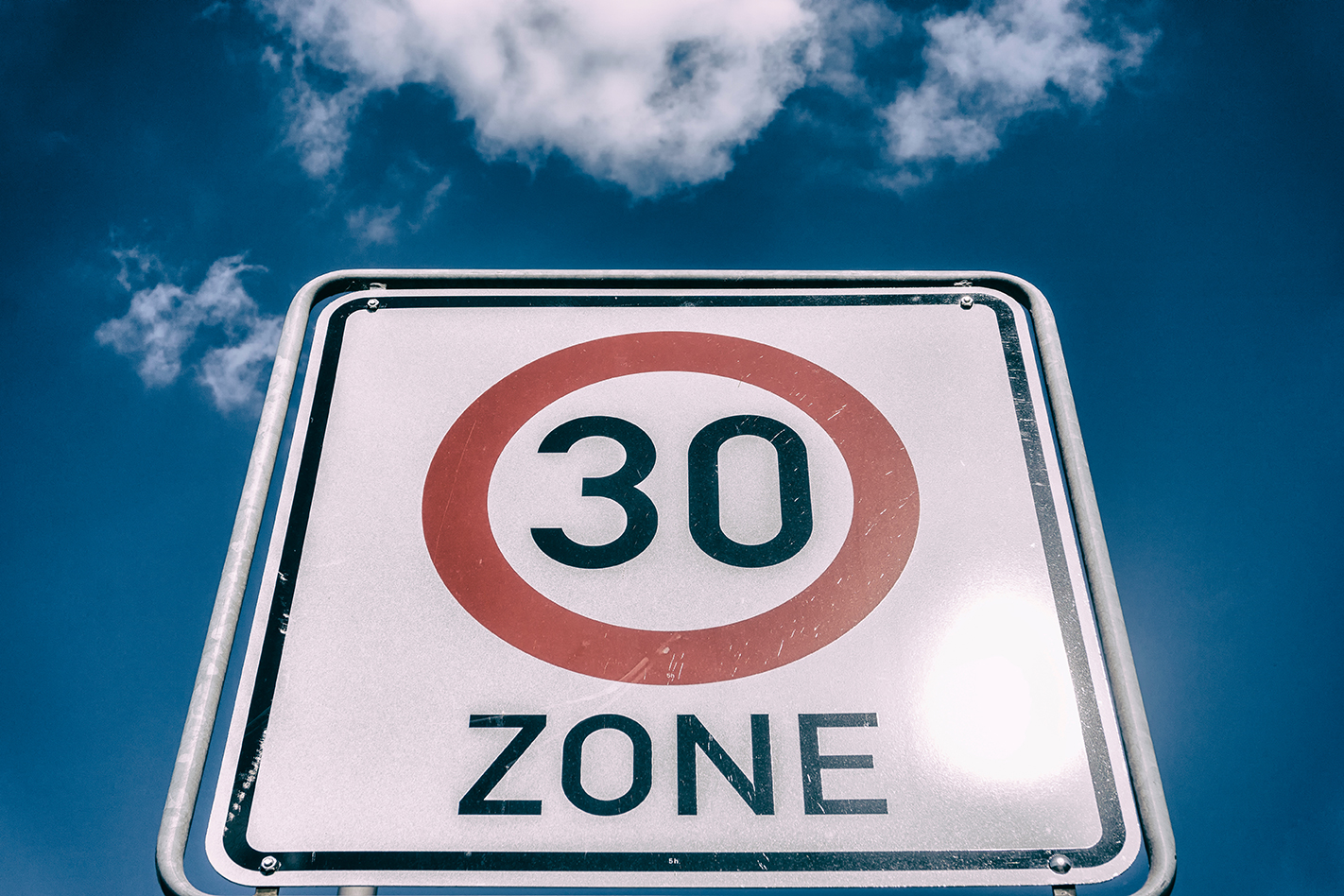
Things we like
- Seven seats make it better equipped for off-road family adventures compared with rivals
Not so much
- Extra height and off-road details make it thirstier than the Everest Sport
Perhaps it would be harsh to describe the Ford Everest Tremor as a knee-jerk reaction. It’s better than that would suggest, but since the UB-generation Everest launched here in late 2022, it has enjoyed something of a free pass. Its key rival, the Toyota Landcruiser Prado has, until fairly recently, been on runout, a geriatric opponent that fell way short of the Ford’s ability.
Knowing that the new Prado would be with customers in late 2024, Ford realised that it might need something extra to go into battle with Toyota’s Altitude version of the Prado, an off-road focused special that brought additional capability and attitude.

The Tremor template had been used before, as a special edition version of the Ranger, designed in that instance to temporarily plug a gap between the Raptor and the Wildtrak X models. This time round, the Tremor becomes a permanent fixture in the Everest line up, so Ford is taking it a bit more seriously.
One thing is for certain, it’s built on a solid foundation. The Everest carried off Wheels’ Car of the Year crown in 2023, impressing the judging panel with its sheer utility. Designed by Australians in Australia for Australians is a pretty tough set of attributes for rivals to replicate, even if the build for this one occurs in Thailand. Our January twin test between the Prado GXL and Everest Sport models merely underlined our belief that the Everest is the best big 4×4 on sale right in Australia right now. Aussie customers have responded too, with sales growing 76 per cent last year. That was an all-time volume record for the segment – something for Toyota to aim at.
Priced at $76,590 plus on roads, the Tremor sits near the top of the range, costing $2000 over a Sport trim and $4600 less than the flagship Platinum variant. Unlike the Ranger Tremor, it’s solely offered with the 3.0-litre V6 turbodiesel powerplant. It performs a subtly different role, largely due to the fact that aside from a single test mule, there’s no Everest Raptor in production guise.
The key attractions will probably be the 29mm lift in ride height over the standard Everest and a toughened-up look. Even if you never plan to take the Tremor up anything more arduous than an unsealed road, these two attributes will be enough to win plenty of admirers who merely want the most macho Everest variant.
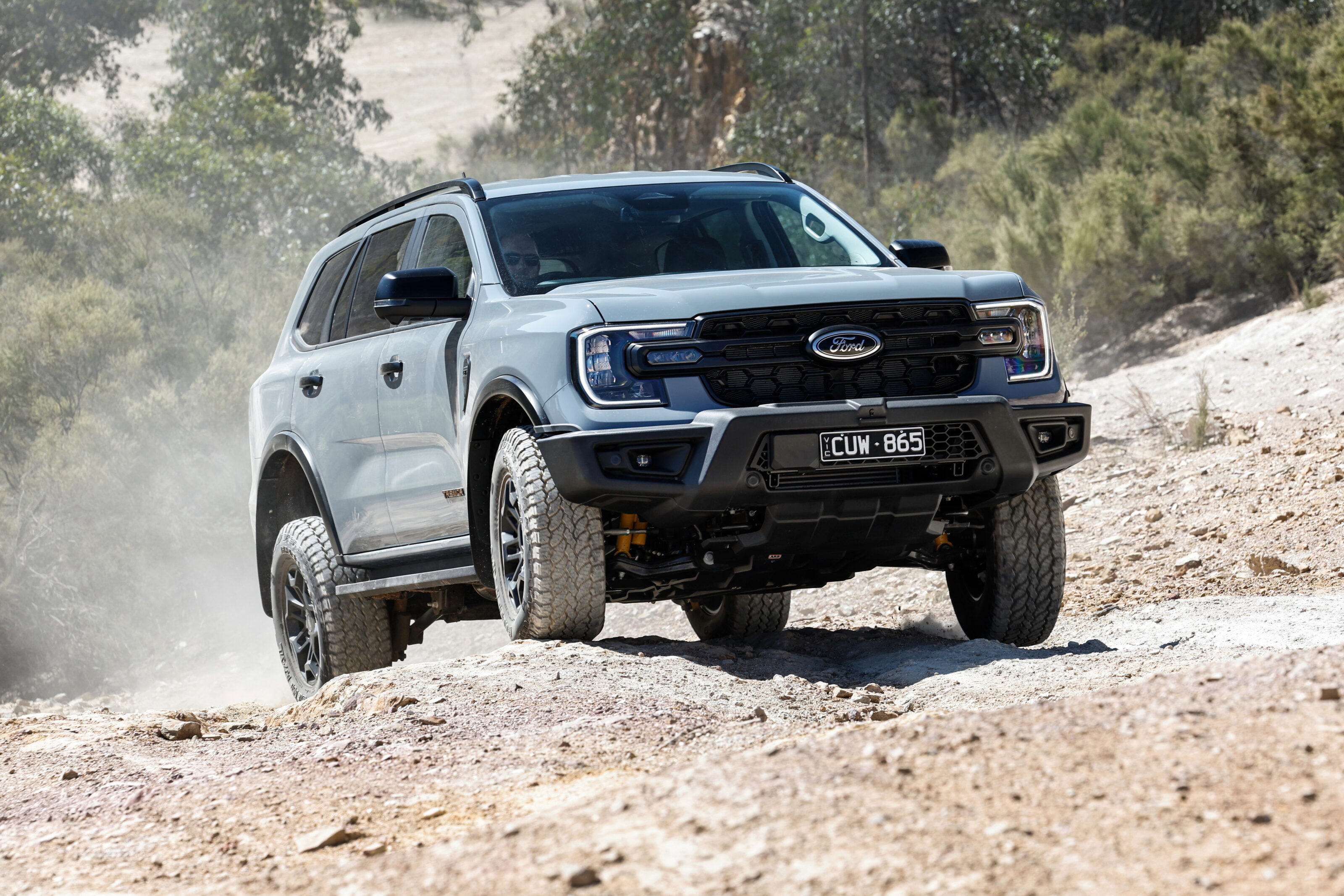
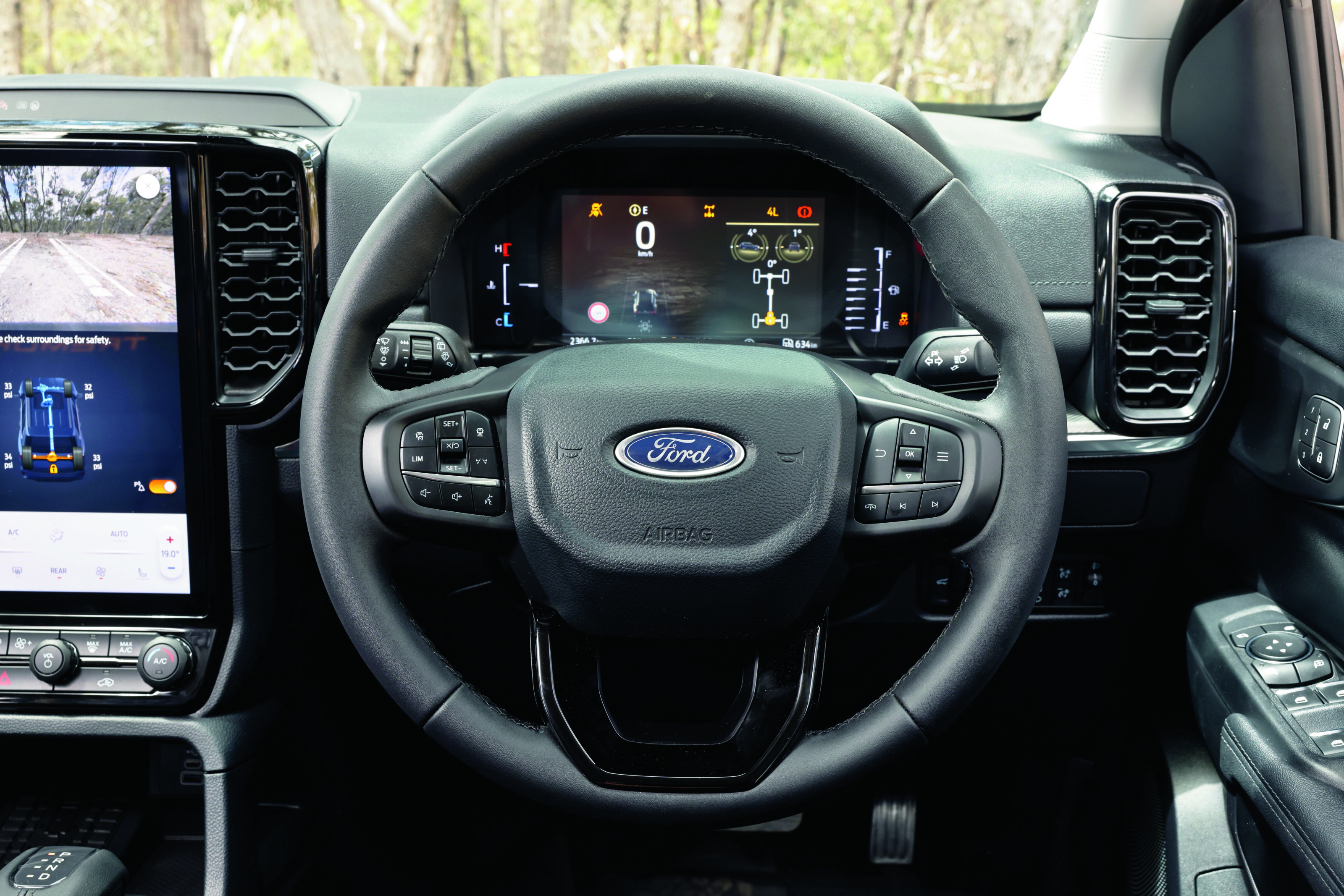
Those who are about to test the Tremor’s chops a little more severely will note the new Bilstein position-sensitive dampers and the 285/65 R17 General Grabber AT3 all-terrain tyres. A word on this little combo: Ford claimed that these dampers would improve ability both on and off-road. I drove a selection of Tremor vehicles on the local press event and the ride was routinely wooden, stiff-legged and harsh, something I wouldn’t have expected in an Everest with this damper and tyre combination.
Further investigation revealed that the tyres were typically inflated to a ruinous 13psi above the placarded pressures. I was fortunate enough to be able to take an Everest Tremor away from the launch, and once returned to the correct pressures, the ride was transformed to something even better than the Everest’s normal plushness. So if you see road tests elsewhere, criticising this vehicle’s ride quality or its unacceptable road noise, now you know why.
In Ford’s defence, it was a seriously hot day, which would cause pressures to creep up, but I also wondered whether a few additional millimetres in ride height would have helped the vehicles tackle an incredibly arduous off-road route through Toolangi State Forest. Deep ruts were the order of that particular day, and there were certain routes where the Everest Sport vehicles we also had along just couldn’t negotiate sections that the Tremor barely squeaked through.
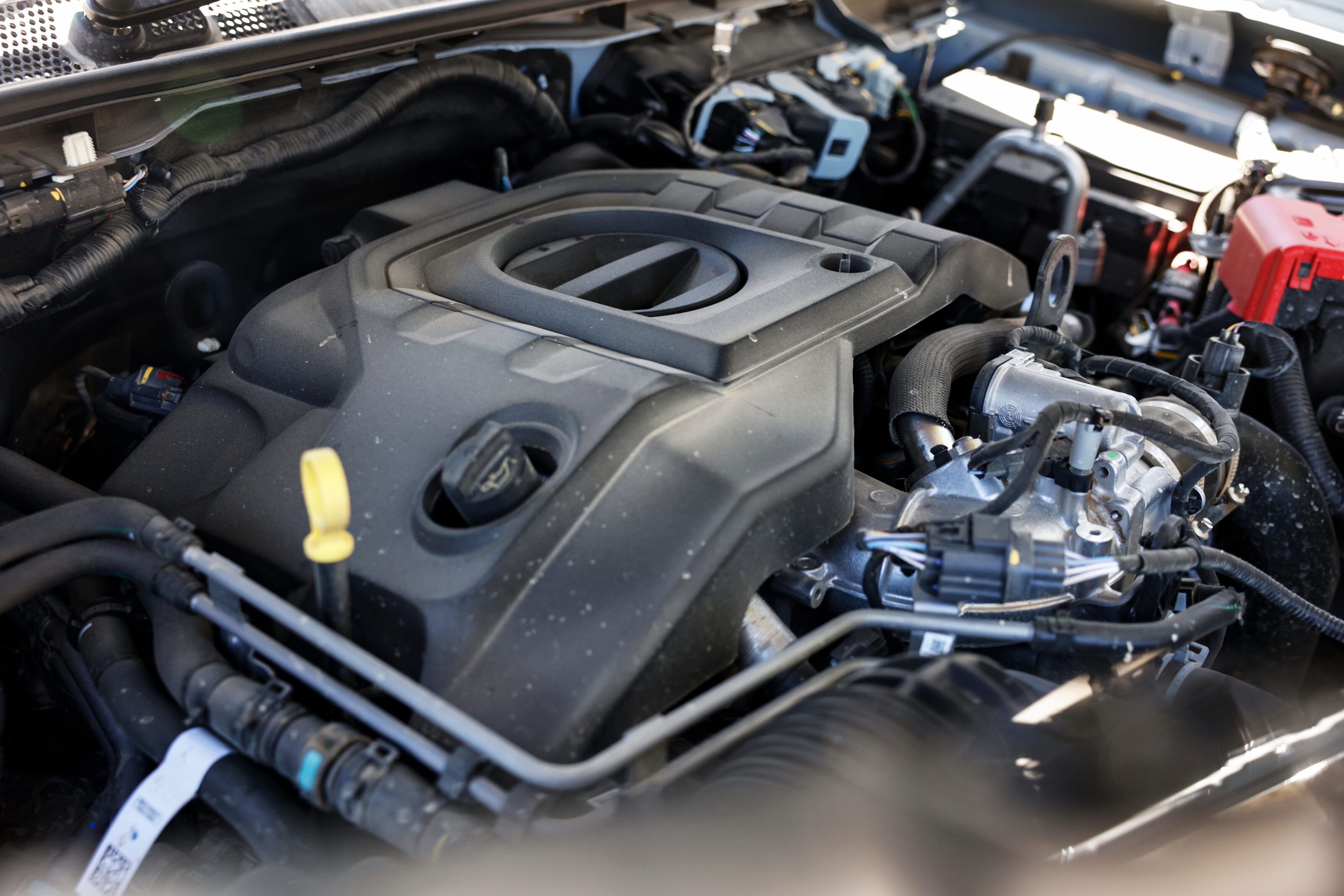
With a ground clearance of 255mm, the Tremor also scores a 30mm extension in track width compared with the best-selling Sport trim. The approach angle of 32 degrees is almost two degrees superior, while the departure angle is 26.8 degrees and the breakover angle 23.9 degrees. Wading depth is unchanged at 800mm and braked towing capability remains at 3500kg. Payload if towing three and a half tonnes is 300kg – slightly better than both the Prado Altitude and, for what it’s worth, the Everest Sport.
The dampers are interesting. They’re a monotube design with a nitrogen-charged external reservoir that have been tuned by Ford’s product development team here in Australia, with the aim of allowing the Everest to tackle terrain such as washboard and gibber with greater resistance to overheating. They pair with a set of longer coil springs. An additional off-road drive mode is incorporated into the terrain management system. As well as the six drive modes you’ll see in other Everest 4×4 models (Normal, Eco, Tow/Haul, Mud/Ruts, Slippery and Sand), the Tremor also nets Rock Crawl mode, designed to optimise traction and deliver optimum torque in extreme circumstances.
Tyre pressure monitoring also features, which is a notable miss across most of the Everest range. The Tremor also gets auxiliary LED lights in the grille, a steel bash plate, matte black mirror housings and doorhandles, matte-black 17-inch alloy wheels, a couple of front tow hooks, composite side steps and orange Tremor badging. The colour palette isn’t very colourful, with Ford offering a choice of the hero Command Grey, Absolute Black and Meteor Grey, but Arctic White is the only non-cost paint finish, the others stinging you for $700.
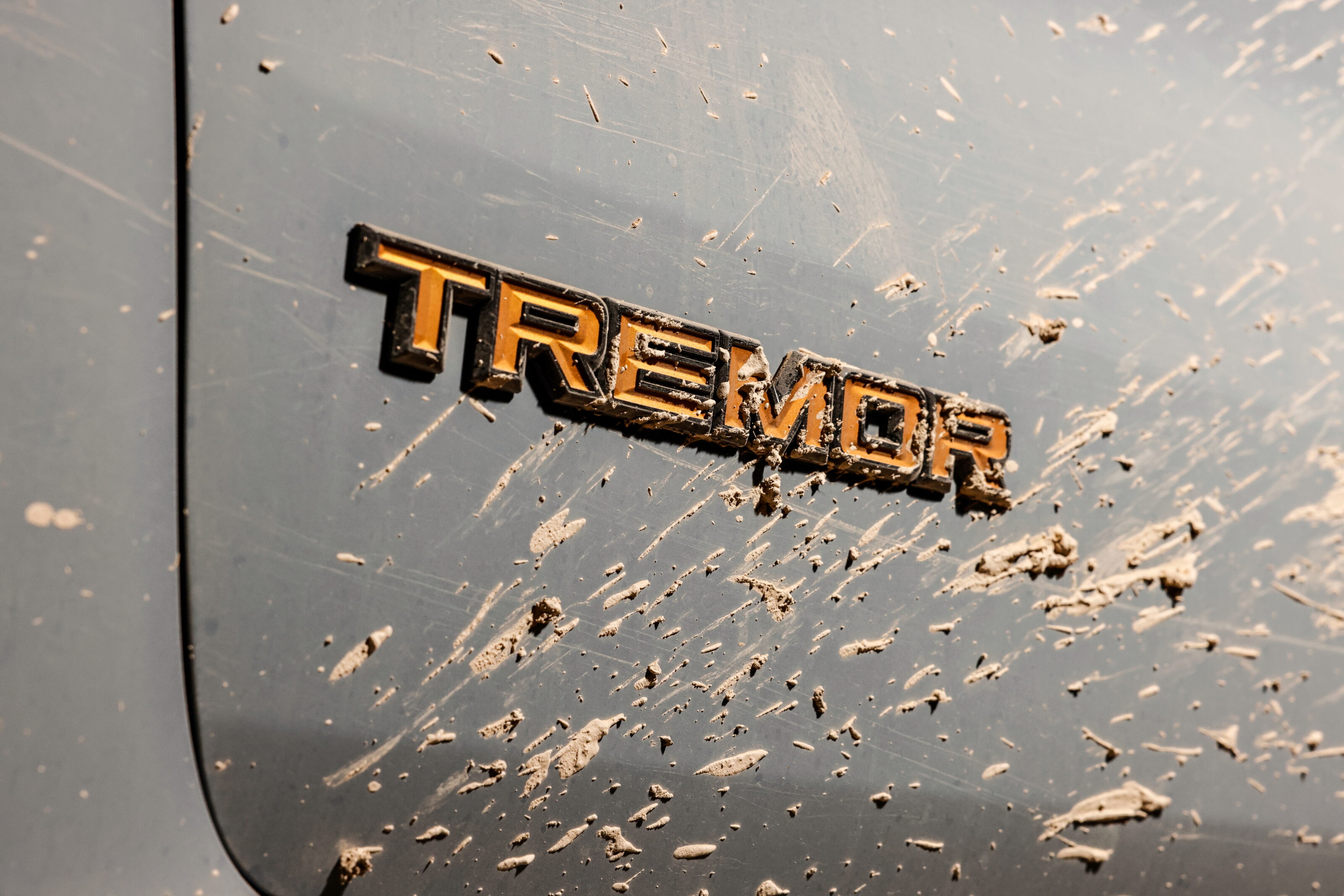
Indoors, you’ll find monogrammed seats, all-weather floor mats and a 400W power inverter located in the rear of the centre console. Ford also offers a $3500 Rough Terrain Pack, which features a rough terrain bar and under vehicle armour, five auxiliary switches in an overhead panel, an $1100 Premium Seats Pack with greater electrical adjustment, and memory along with heating and ventilation. There’s also a $1900 Towing Pack and a $2500 Touring Pack which builds on the Towing Pack by adding a 360-degree camera and Pro Trailer Backup Assist.
The fuel tank is the same as the standard Everest range at 80 litres, although a 140-litre fuel tank is set to be offered. This will carry the same five-year warranty as the vehicle if fitted in factory and a two-year deal if retrofitted. Keep your eyes open for more news on that score. One thing to note is that because of the greater ride height and off-road detailing, the Tremor consumes fuel at a rate of 9.5L/100km, which is up a litre versus the Everest Sport.
In many regards, the Everest Tremor brooks few surprises. We knew the 3.0-litre Lion V6 is a formidable engine, delivering 184kW and 600Nm, and it pairs well with the 10-speed auto. I’d still like to see a set of paddle shifters fitted to the Tremor, as this would improve the impression of control both on-road and off. As it stands, you’ll need to operate a fiddly set of smooth buttons on the side of the gear shifter if you want to dictate gears to the 10R80 transmission.
The standard off-road screen is excellent, showing camera views or, if you prefer, roll and pitch angles. It also allows you to quickly engage hill descent or the rear diff lock. The Tremor uses a form of off-road traction control by braking up front which works reasonably well when low range and the rear diff lock is engaged, but the option of a front diff lock wouldn’t have gone amiss.
The changes turn the Everest from a vehicle that’s competent off road to one that revels in the rough stuff. It’s still not quite in the top league of genuine mud-pluggers, but given the modest $2000 price increase over the Sport, it looks like money well spent. Know both the limits of your abilities and the Tremor and you should be more than happy. It also scores the not insignificant advantage over the Prado Altitude of offering seven seats, a better engine and a functional luggage bay. A great family 4×4 with a little more attitude? That’s about the size of it.
Specs
Engine: 2993cc V6, 24v, dohc, turbodiesel
Max power: 184KW @ 3250rpm
Max torque: 600Nm @ 1750-2250rpm
Transmission: 10-speed auto
Weight: 2550kg
Economy: 9.5L/100km
0-100km/h: 9.2sec
Price: $76,590
On sale: Now
This month’s edition of Wheels, if we don’t say so ourselves, is jam-packed with quality motoring content.
It starts with our Ultimate Battle of the Best Sellers, in which Dylan Campbell takes the new Mazda BT-50, the Toyota HiLux, the Ford Ranger and the Isuzu D-Max – three of the four best-selling vehicles in the country – for a drive-off to work out which is the overall best for Australian conditions.
Andy Enright turns heads in Victorian country towns by taking the 488kW hybrid Corvette E-Ray (below) for a tour.
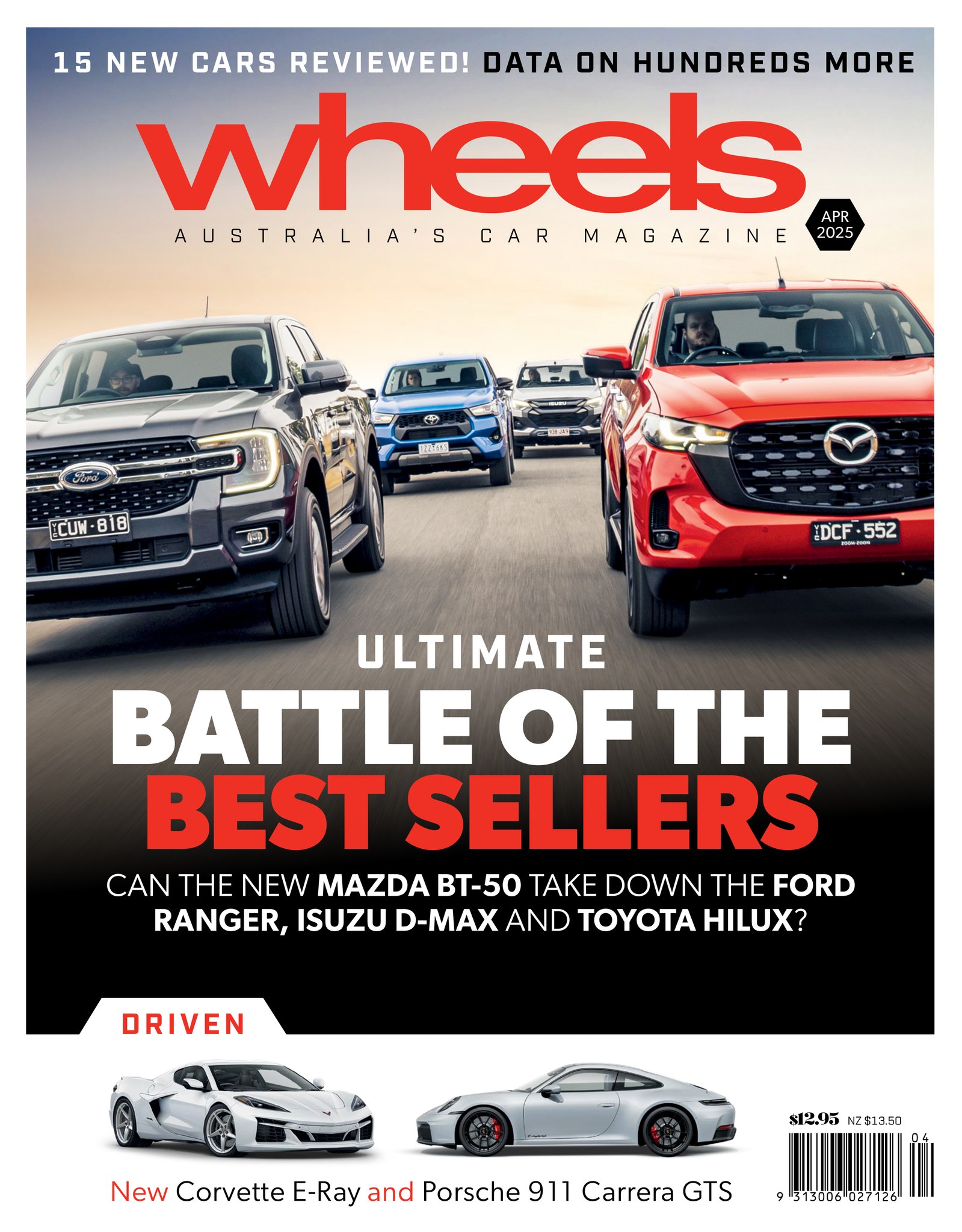
Another hybrid- the Porsche 911 Carrera GTS – is put through its paces to see where it fits in the model’s famous lineage.
There are first drives of the rugged Ford Everest Tremor, plus the MG ZS Petrol, Nissan Qashqai, Smart #3 Brabus, Ford Mustang EcoBoost, Honda HR-V and Aston Martin Vantage.
We also interview Premcar’s Bernie Quinn, an Aussie automotive engineering success story who admits he was a slow starter in life, celebrate a Modern Classic in the shape of the famous VL Commodore, and send off the Jeep Grand Cherokee as it ends its time in Australia.
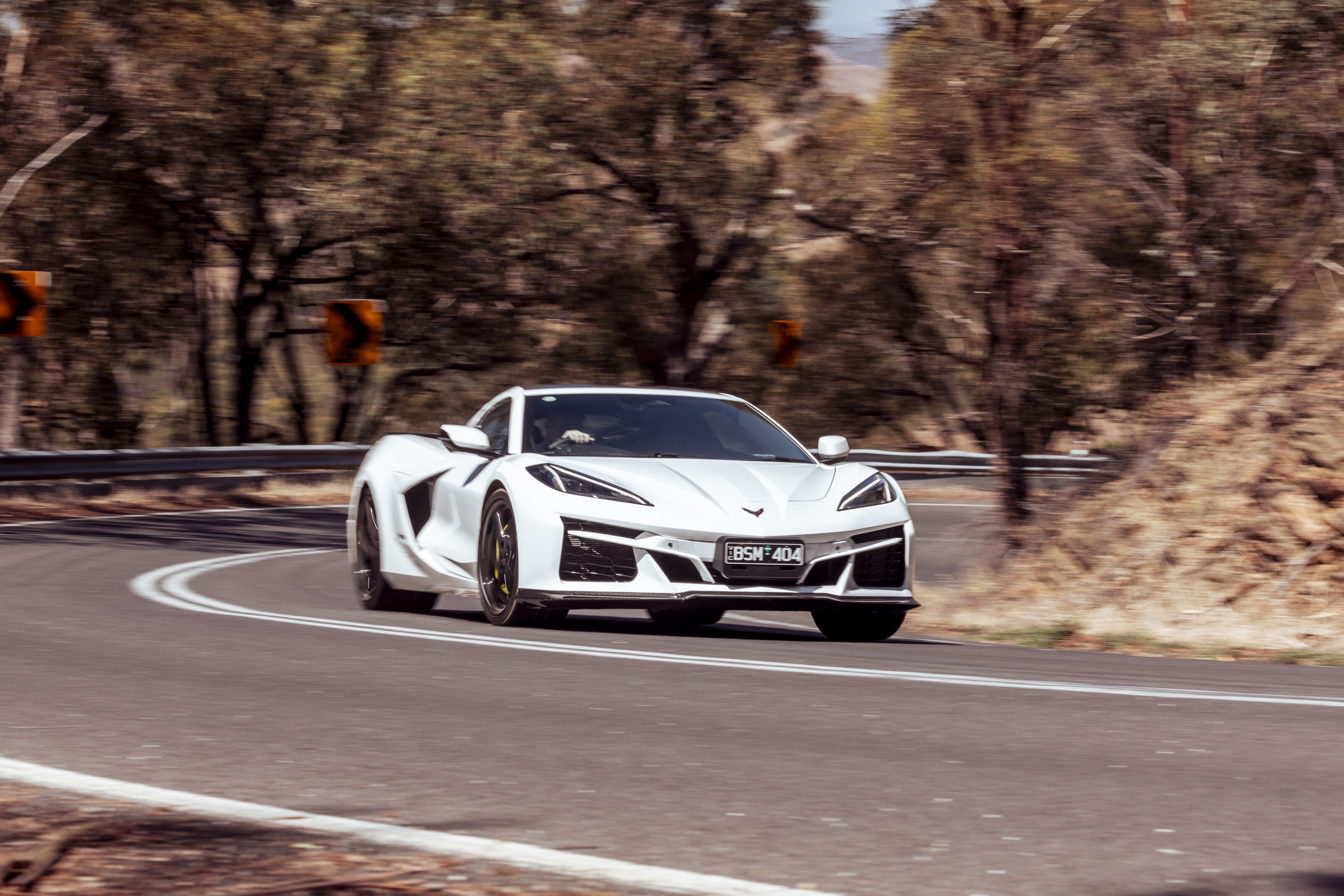
Plus there’s our indispensable Databank section down back, 21 pages of facts and figures about every new car on the market.
Wheels April edition – we think it’s a cracker. You can also subscribe to the magazine here.
Ineos Automotive Australia has launched an extraordinary new refund program for buyers of its new Quartermaster ute, dubbed ‘Love It or Leave It’. Designed to get Aussie 4×4 enthusiasts behind the wheel, the brand will repurchase the vehicle from buyers if it fails to meet their expectations within a six-month/15,000km period.
Justin Hocevar, Head of Region at Ineos Automotive Asia Pacific, remarked: “As a scale-up brand we recognise that we’re combatting brand awareness and trust, to an almost David versus Goliath extent with engrained industry giants who have become a default choice, particularly in regional Australia.
“Our ‘Love It or Leave It’ offer embodies not only our unwavering confidence in Quartermaster and the Grenadier vision, but it also demonstrates our steadfast commitment to building trust in our customers.
“We’re daring Aussies to do their research and put the Quartermaster to the test – trust us by buying it, taking it, off-road adventuring with it, and loving it… and if they don’t, leave it,” he said.
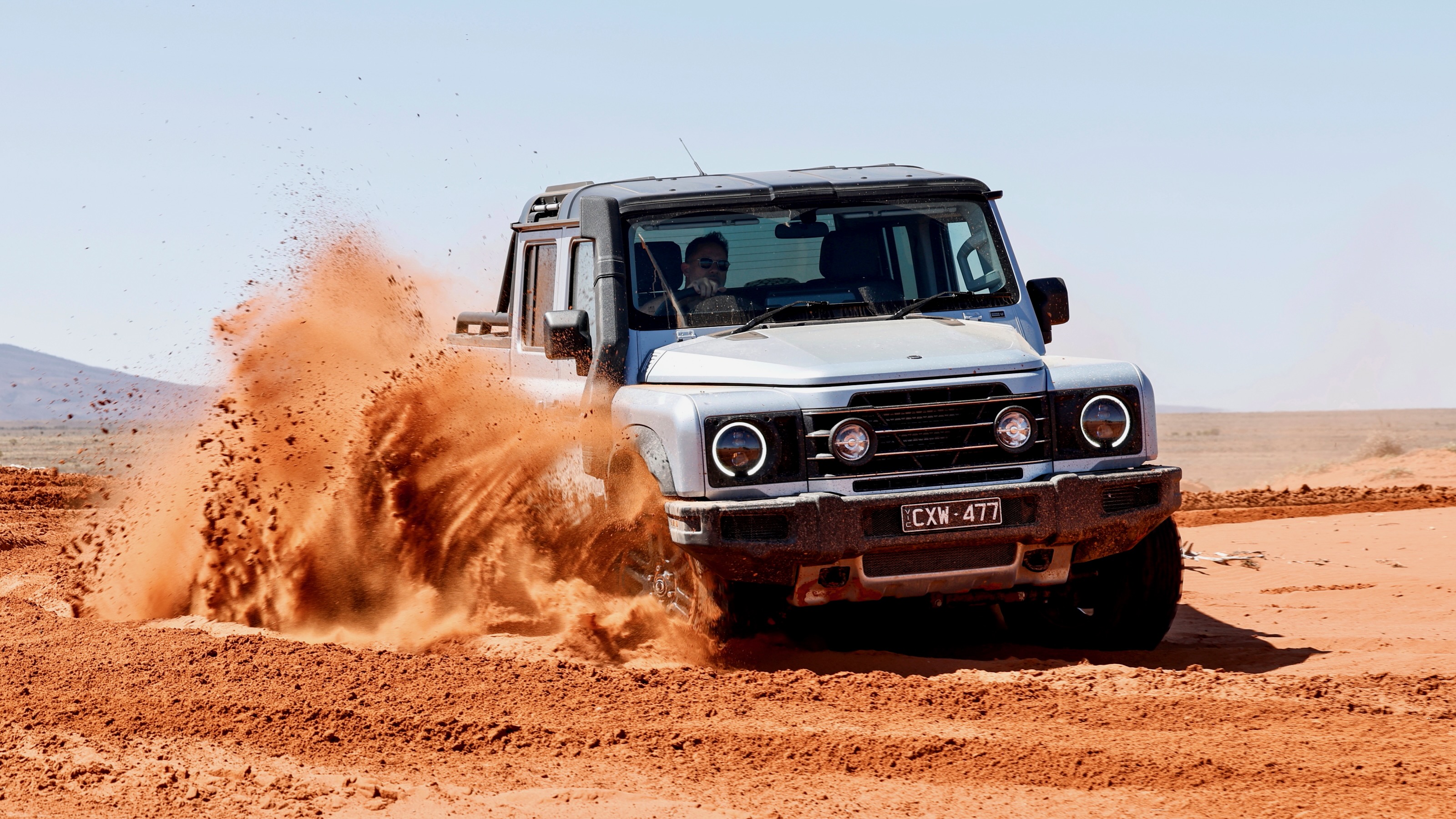
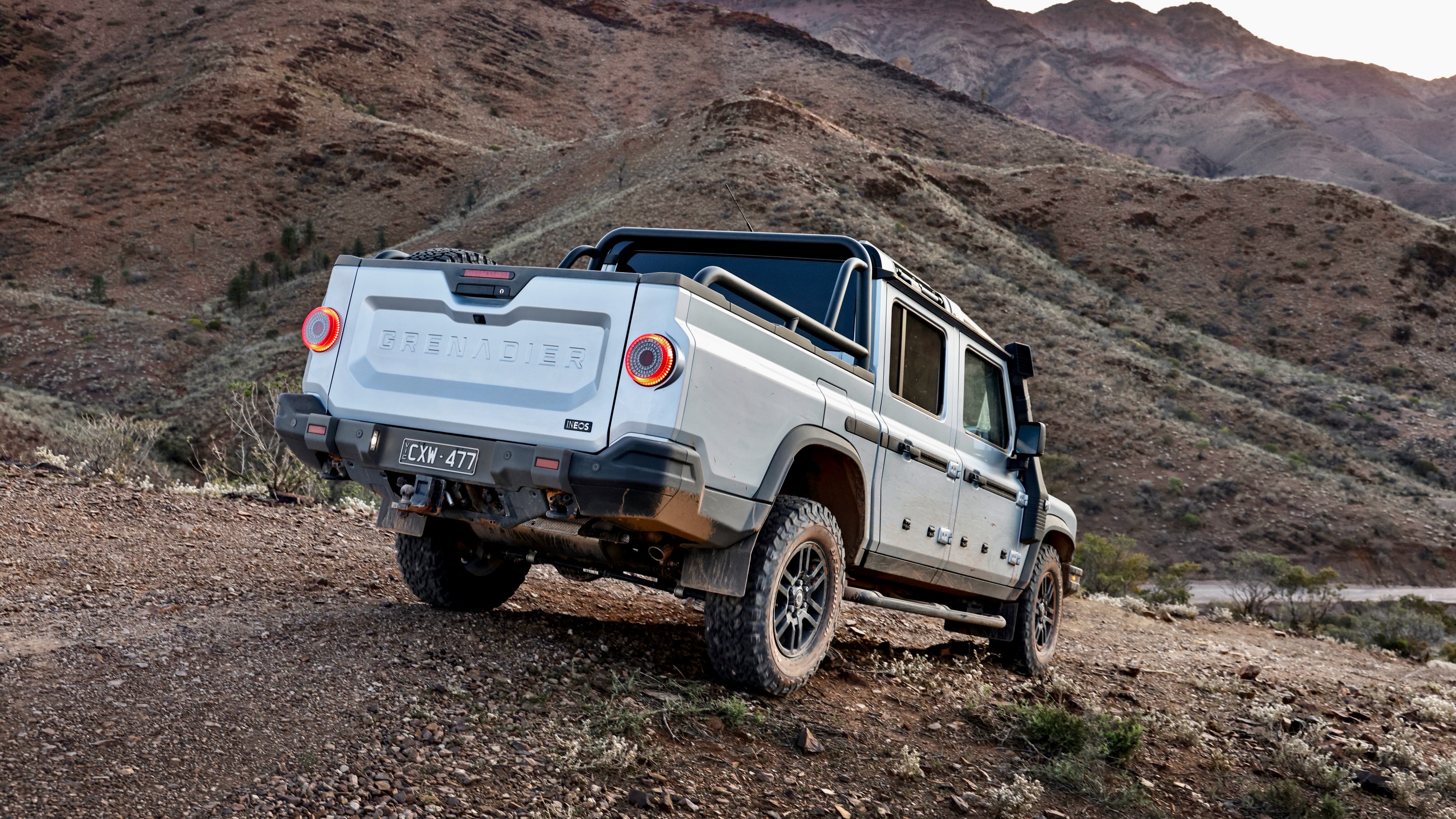
The program is, however, not a straight refund and customers will be charged the vehicle’s depreciation during that period and any damage beyond that. Ineos is charging $1500 to customers per 1000km travelled up to a maximum of 15,000km, or $22,500 if they decided to return their vehicle.
As per the company’s website, government charges such as stamp duty are also not refunded to the customer.
Ineos shows that a Grenadier purchased through finance at $118,000 drive-away – travelling 6000km in the first six months – would equate to a $103,500 buyback costing $14,500 to the customer. That’s assuming no damage to the vehicle and is based on $7000 in on-road costs and $9000 in usage charges not returned to the customer, but a $1500 finance break clause credit.
Developed alongside the Grenadier wagon, the Quartermaster is a dual cab-ute with the same choice of BMW-sourced 3.0-litre turbocharged 210kW/450Nm petrol or 183kW/550Nm diesel engines and a ZF eight-speed automatic transmission.
Ineos is keen to show off the Quartermaster’s off-road credentials: its 264mm ground clearance and 800mm wading depth are key examples, while the brand says that its approach, breakover and departure angles are unrivalled by any other series production pick-up. It also features a centre differential lock and a two-speed transfer case, while front and rear diff locks are optional.
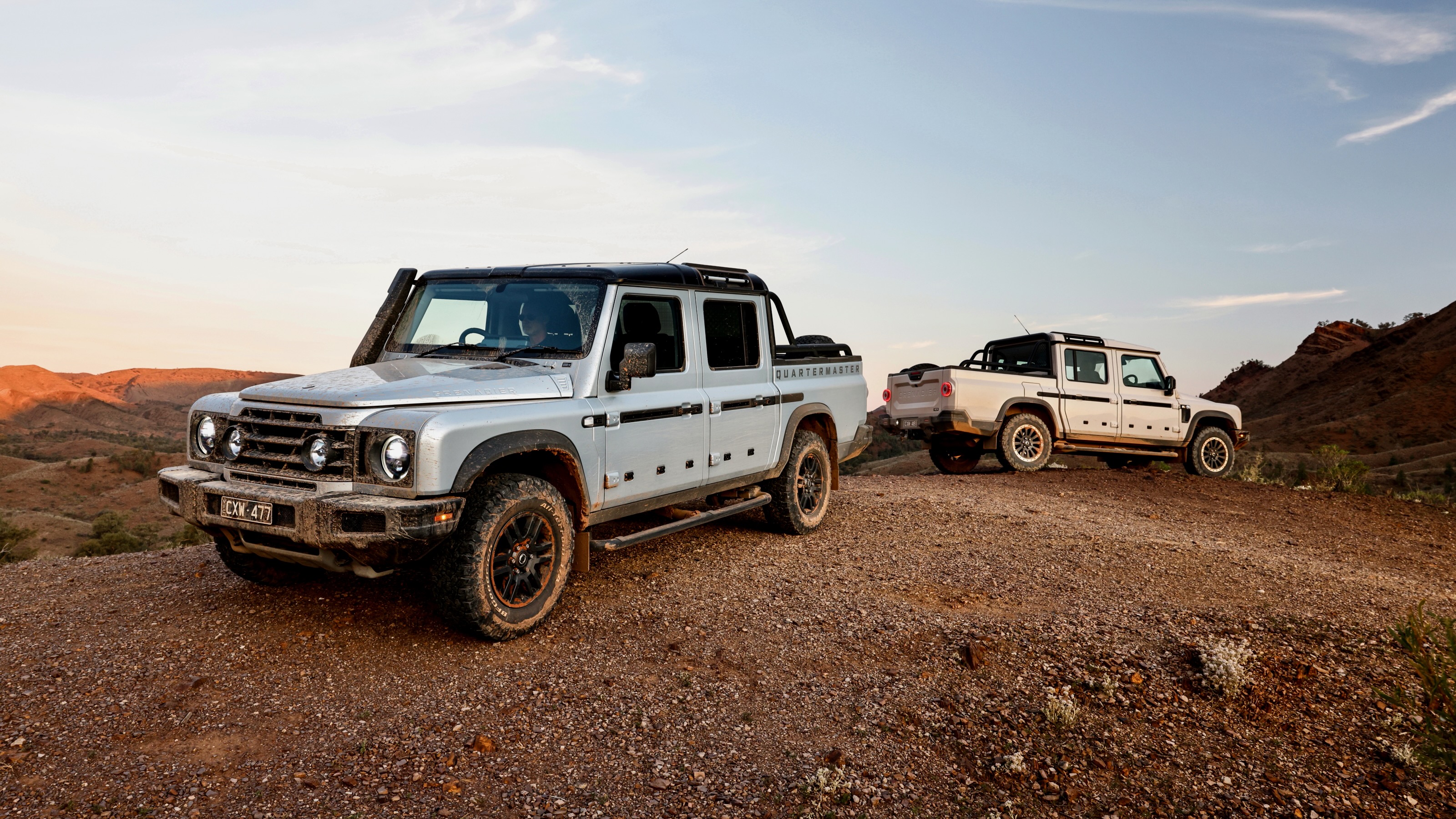
The Quartermaster also offers a 3,500kg towing capacity and 907kg (petrol) or 832kg (diesel) payloads, as well as a wide range of accessories.
The Ineos Grenadier Quartermaster is priced from $102,000 plus on-road costs in cab chassis form and is available from Ineos dealerships.
Twice in the past month I’ve had emails from people who bought the wrong car.
I know this because they each confessed their mistake. One was complaining that the driver’s seat was massively uncomfortable for her when she ventured beyond her daily commute, and the other admitted there was not enough space inside for his kids and all their stuff.
One was going to live with the mistake while the other intended to take a giant financial hit and switch cars. Neither was happy with their sub-optimal outcome.

Yet, as I advised them, it would have been easy to avoid their mistake by using one of the most basic and old-school methods in motoring – a test drive. Online shopping might be great for a quick dinner delivery, and only a small risk for a sub-$100 impulse buy, but it’s not the way to purchase a new car.
Yes, the interweb can supply you with all the basic facts and figures, then even calculate the all-important drive-away pricing. But… how does it look, how does it feel, will the kids and their stuff fit in the back? Is it better or worse than what you are already driving, and how does it compare against the other shiny newbies in the car world?
A test drive – or two – should answer every question. Just as it does for the team at Wheels.
The basic process is always the same and, like every major purchase in your life, should begin with research.
Firstly, set the budget. Then the size. Then a couple of potential makes and models. Colour should come last. When it’s time to start the test drives, never go alone. If it’s going to be a family car, take the family. Even if it’s just a car for one, a second opinion never hurts.

Start the test drive the way a pilot would begin – with a walk-around – and then begin in… the boot. That’s where you discover if there is a spare tyre, how much space is available – don’t forget to fold the back seats – and how easy it is to load and unload. Move forward through the back seat, having a serious sit and a good look around. Are there air vents, USB sockets and easy- to-use seat belts? What is the view like?
The best measure of space is to set the driver’s seat in your normal position, then sit behind ‘yourself’. How good’s the legroom now?
Finally, jump into the front and do not be distracted – or impressed – by ‘all the bells and whistles’. Virtually every car has them now, even if a giant infotainment screen is massively advanced compared with the basic radio display in your 20-year-old runabout. Check the view, operate the controls, settle into the seat, get a briefing on the standard driver-assistance systems – so you can anticipate any bings, bongs, bells or flashing lights – and head out.
You should be driving on a road you know, for a genuine assessment of the comfort, the ride quality and the cabin noise. Do not be blustered into a five-minute race around the block, often in the top-line model and not the one you had in mind to buy.
When you are serious about buying, demand extra time and go to a shopping centre you know. How easy is it to park and see out of, and how is the loading and unloading?
Finally, drive it home, park it in the driveway, see if it fits comfortably in the garage – you might be surprised – and if you walk out the front door and it makes you smile, then it’s a winner.
This piece first appeared in the May issue of Wheels, on sale now.
Ah, that new car feel. It’s a memory that never leaves you, really, getting behind the wheel of a fresh-out-of-the-factory vehicle.
The sheer pleasure of that experience is perhaps part of the reason for the growing popularity of novated leasing. The option of driving a new car – and then another new one a few short years down the track – is made possible by this convenient means of financing, which differs from personal car finance in some significant ways, offering both tax and lifestyle benefits.
Hassle-free buying
While theoretically anyone can negotiate a novated lease, the most common arrangement in Australia is a three-way agreement between an employee, their employer and a lease finance company such as Smart, who handle all aspects of organising the new vehicle. In this set-up the employee pays for the lease of the car through instalments from their pre-tax earnings, reducing their overall taxable income.
It’s also important to note that a novated lease can be taken out for more than a new car as Mike Daly, consumer education specialist for Smart, told WhichCar.
“A novated lease can be taken out on a brand new or used car, and it can also be purchased through a dealership, through private sale or even an auction,” says Daly. “It’s quite open to the type of car you get, and how you come across it.”

Convenience is a key attraction of taking a novated lease.
“Most people find the worst part of buying a car is the process of dealing with car dealers and buying the car,” says Daly. “But we can take care of that whole process and do it internally – find the right car for the customer at the best possible price, leveraged through our relationships with dealers, and then the whole process is handled by one person all the way through.”
That means registration, insurance, servicing and other maintenance can all be handled by the lease company.
“A budget is agreed upon with the customer when the lease is set up,” says Daly. “We base that on the length of the lease, how far the customer thinks they’re going to be driving, and also the type or car they’re buying – how much fuel it uses, how many replacement sets of tyres they’re going to need, what the servicing schedule is going to be – all those details are tailored and managed for each individual customer.”
Depending on a person’s circumstances, novated lease contracts run for between one to five years.
“Some people drive a lot so they might want to turn their cars over regularly,” says Daly. “Other people might be at the time of life where they have three kids and they need a seven-seater and that’s not going to change for the next five to six years, so they might feel very comfortable entering into a five-year lease.”
Tax benefits
A key advantage of a novated lease is its tax effectiveness. Novated leasing is approved by the Australian Tax Office as a means of car finance. By making a monthly payment from their pre-tax pay to lease the vehicle, the lessee reduces their total taxable income, potentially reducing their income tax bill by a substantial amount. The self-employed can also take advantage of this benefit.

“A lot of people focus on the pre-tax savings but that’s only one of the [tax benefits],” says Daly (above). “The other benefit is that you don’t pay GST on any of the running costs you have through a novated lease, so your fuel is 10 per cent cheaper just because you’re running your car through a novated lease. You also don’t pay GST on the purchase price.
“It’s one of those things – you don’t think 10 per cent off your fuel is that much but when you multiply it over every tank of fuel during a five-year lease, it’s going to add up to a significantly higher figure.”
Electric vehicles have proved particularly popular for those entering a novated lease because of the Federal government’s 2022 Electric Car Discount Bill, which allowed eligible electric vehicles (i.e. those under the luxury car tax threshold) to be paid for 100 per cent from pre-tax earnings and exempt from Fringe Benefits Tax. Plug-in hybrid vehicles (PHEVS) were also included in the concession, but that expires on March 31, 2025.
“From March 31 PHEVs will no longer have that exemption available, so they will go back to normal – the lease paid from a mixture of pre and post-tax earnings,” says Daly. “EVs will continue as normal until at least 2027 when the government’s committed to review the program.”
Lease expenses for petrol or diesel cars need to be paid from a mixture of pre-tax and post-tax money, usually divided about 50 per cent each.
A word of caution
It’s important to remember a novated lease is a type of loan and so the company providing the finance will assess your ability to manage and repay the amounts involved just like any other loan. This means consumers should do a proper assessment of their financial situation and their current commitments, before embarking on a novated lease.
“A really important thing for people when they’re first looking into a novated lease is to have an idea of the costs they’re paying at the moment,” says Daly. “Normally when you run a car, you don’t think of your registration as 26 instalments of $45 dollars… so sometimes when you first look at a novated lease, the price can seem quite high because we’re not used to thinking of it in that way.
“One suggestion is to jot down what your costs are currently, and that might help highlight the value of a novated lease.”
Things we like
- Genius Magic Seats in the rear
Not so much
- Only a four-seater; underpowered petrol engine
Standing for “[H]igh-riding [R]evolutionary [V]ehicle”, the Honda HR-V was one of the first small SUVs on the Australian market when it made its debut in 1999. Now in its third generation, the HR-V has just been given a light mid-life update focusing on styling tweaks, some new equipment and – to address criticism about the pre-updated model – a new, cheaper mid-range hybrid trim level.
Pricing kicks off from $32,900 -– that’s drive away across Australia under Honda’s ‘one price promise’ program – for the only petrol model Vi X, with the new hybrid e:HEV X just sneaking under the $40k barrier at $39,900 drive away. The top-trim hybrid e:HEV L completes the lineup at $42,900 drive away and compared to the pre-updated car, pricing has fallen by up to $2,000.
Despite the price drop, the update delivered new features including wider-ranging safety features like traffic jam assist, live services with the ‘Honda Connect’ smartphone app, a leather steering wheel for the Vi X and Matrix adaptive high beam for hybrids.
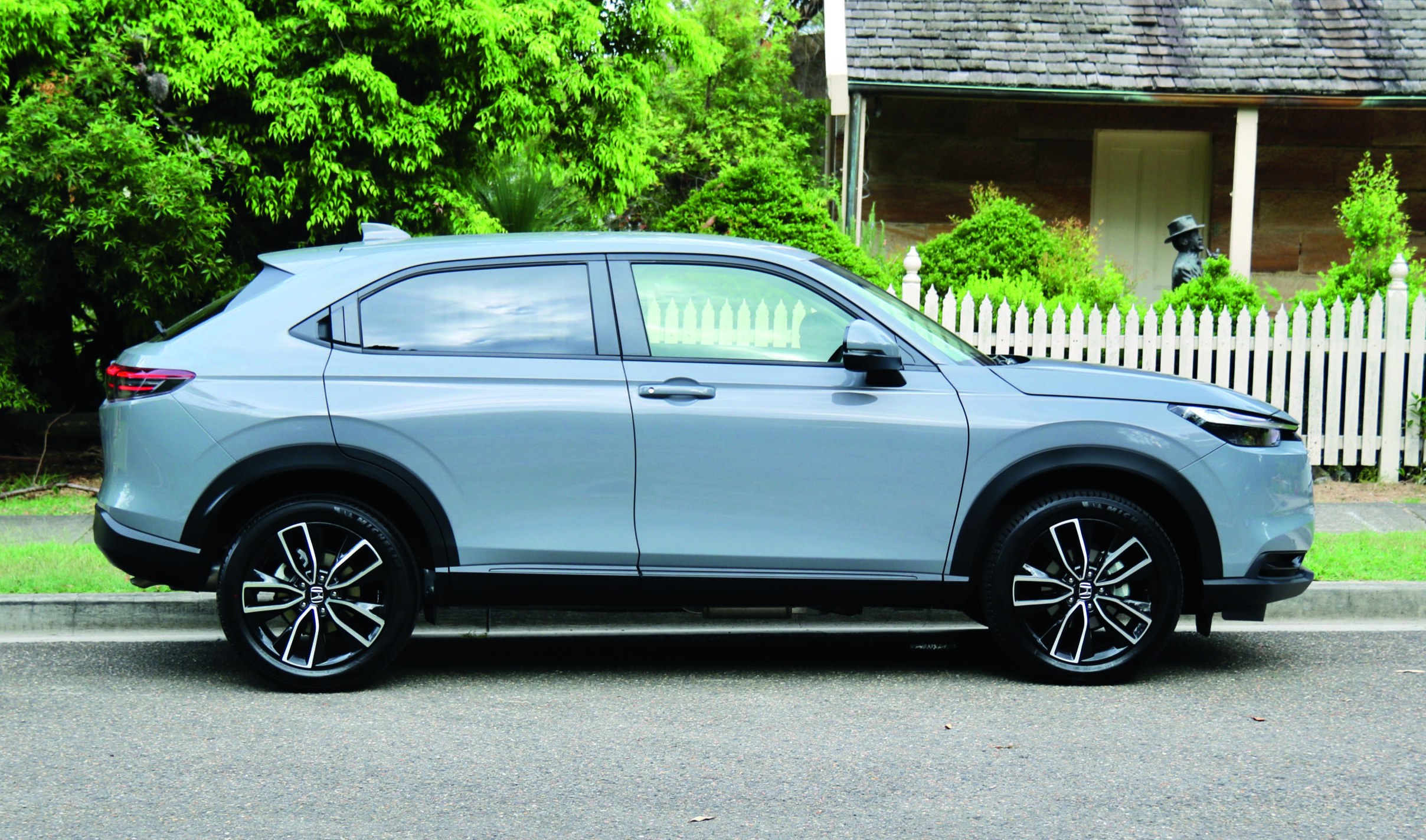
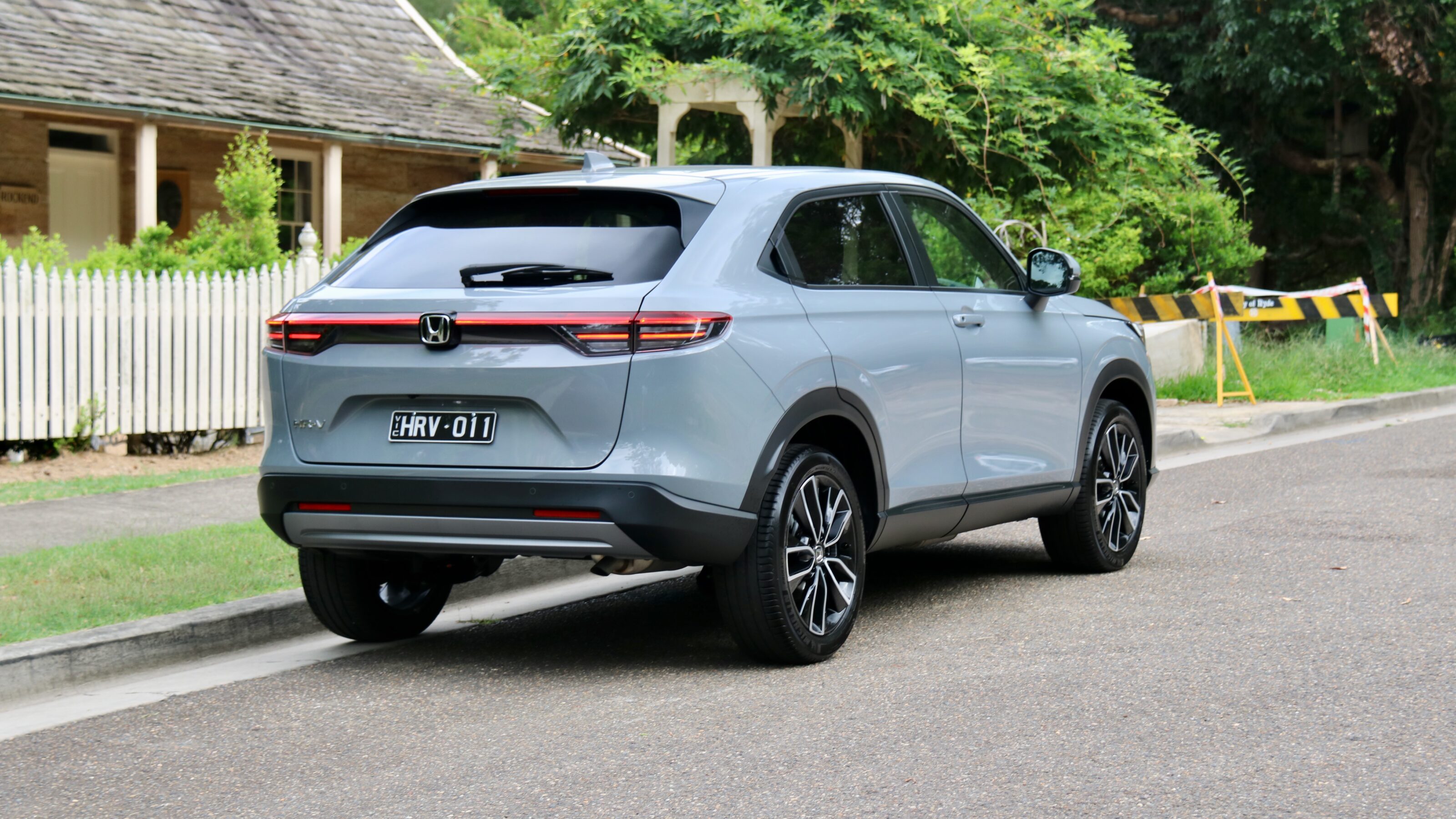
Equipment levels are otherwise healthy with kit such as 18-inch wheels, keyless entry and push button start, automatic climate control, a 9.0-inch touchscreen with sat-nav, wireless Apple CarPlay (though Android Auto is curiously still only wired) and safety kit like AEB, adaptive cruise control, adaptive lane guidance and a reversing camera.
The new e:HEV X adds blind-spot monitoring with rear cross-traffic alert, adaptive high beam, leatherette and cloth seat trim and heated front seats with the e:HEV L adding dual-zone climate control, rear air vents, auto-folding mirrors, auto wipers, an electric bootlid and a heated steering wheel. All up, it’s now better value for money though some features like a sunroof, electric seat adjustment and premium audio are still missing.
Like the pre-updated model, the facelifted HR-V is still a four-seater, which may or may not matter to you. While we’re moaning, there’s no spare wheel across the range either.
Under the bonnet are two 1.5-litre drivetrains: an 89kW/145Nm petrol or a 96kW/253Nm hybrid. Both are mated to a CVT automatic transmission, with claimed combined fuel consumption of 6.2L/100km for the petrol and 4.3L/100km for the hybrid – in the real world, we averaged 7.4L/100km in the petrol and 4.7L/100km in the hybrid.
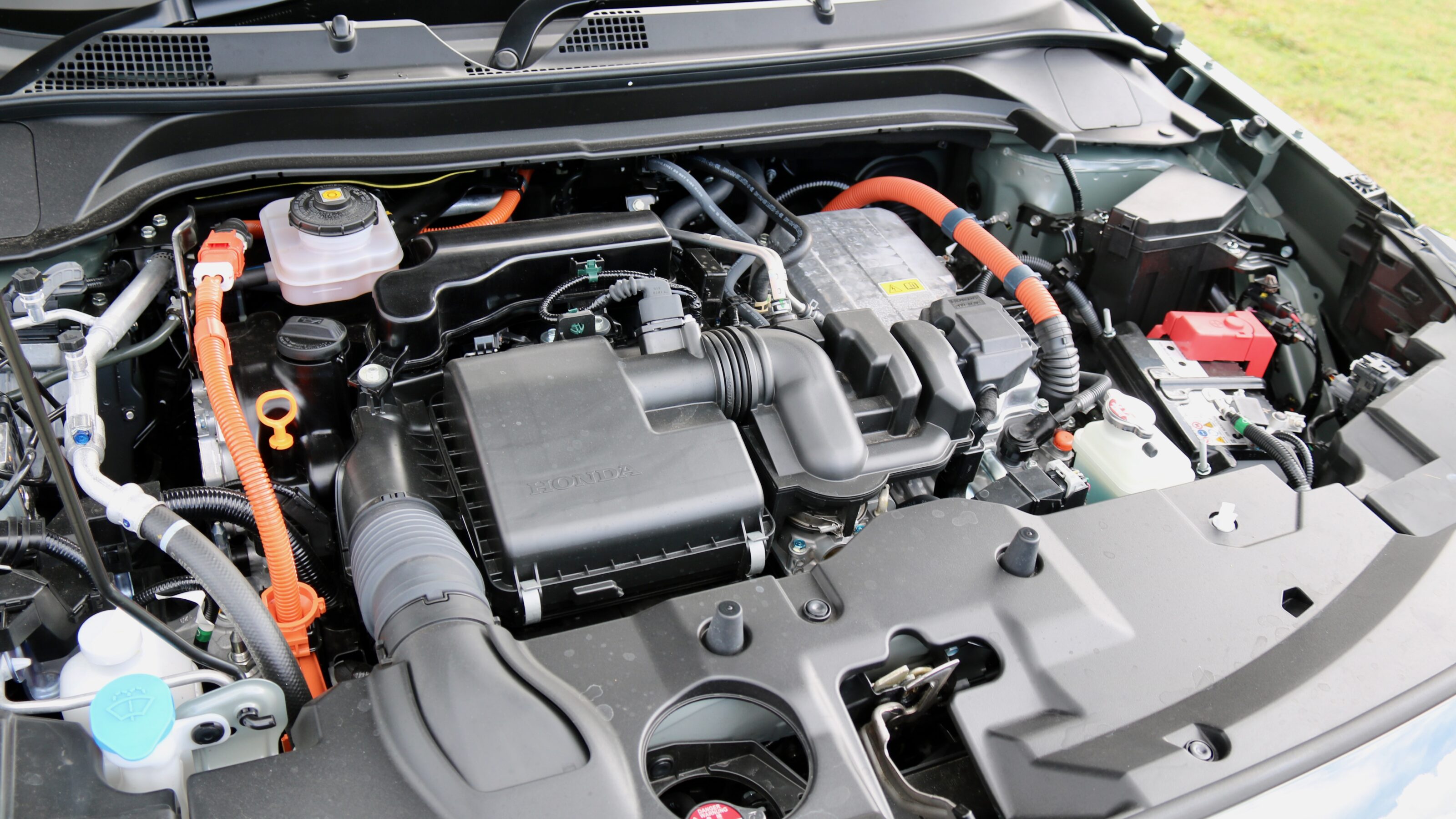
For more than just its excellent fuel efficiency, the hybrid is the clear pick of the updated HR-V range: it’s more refined and punchier, justifying the extra cost (which also includes extra features).
According to Honda, the hybrid drivetrain has been improved with better refinement and a smoother handover between petrol and electric power. In reality, the changes are barely noticeable but it remains one of the best hybrid systems on the market, especially with the transmission’s stepped ratios. Because of that – and unlike a Toyota hybrid – mashing the throttle in the HR-V hybrid doesn’t result in constant high-rev noise until you’re up to speed.
Honda also says that the HR-V hybrid’s dampers have been retuned and it’s not wrong as there’s a greater degree of compliance compared with the pre-updated model, though larger bumps can still upset it a bit. It’s a good handler for the segment, with nicely-weighted steering and a tight chassis.
The cabin of the HR-V hasn’t changed much, but it didn’t really need to: there’s a new centre console tray design for a smartphone – though a wireless charger remains a dealer-fit accessory – and new faster-charging USB-C ports have also been fitted. The 9.0-inch touchscreen adopts live services and remains breathtakingly easy to use. Quality is solid with soft touch dashboard and door trims and lovely switchgear like the leather steering wheel.
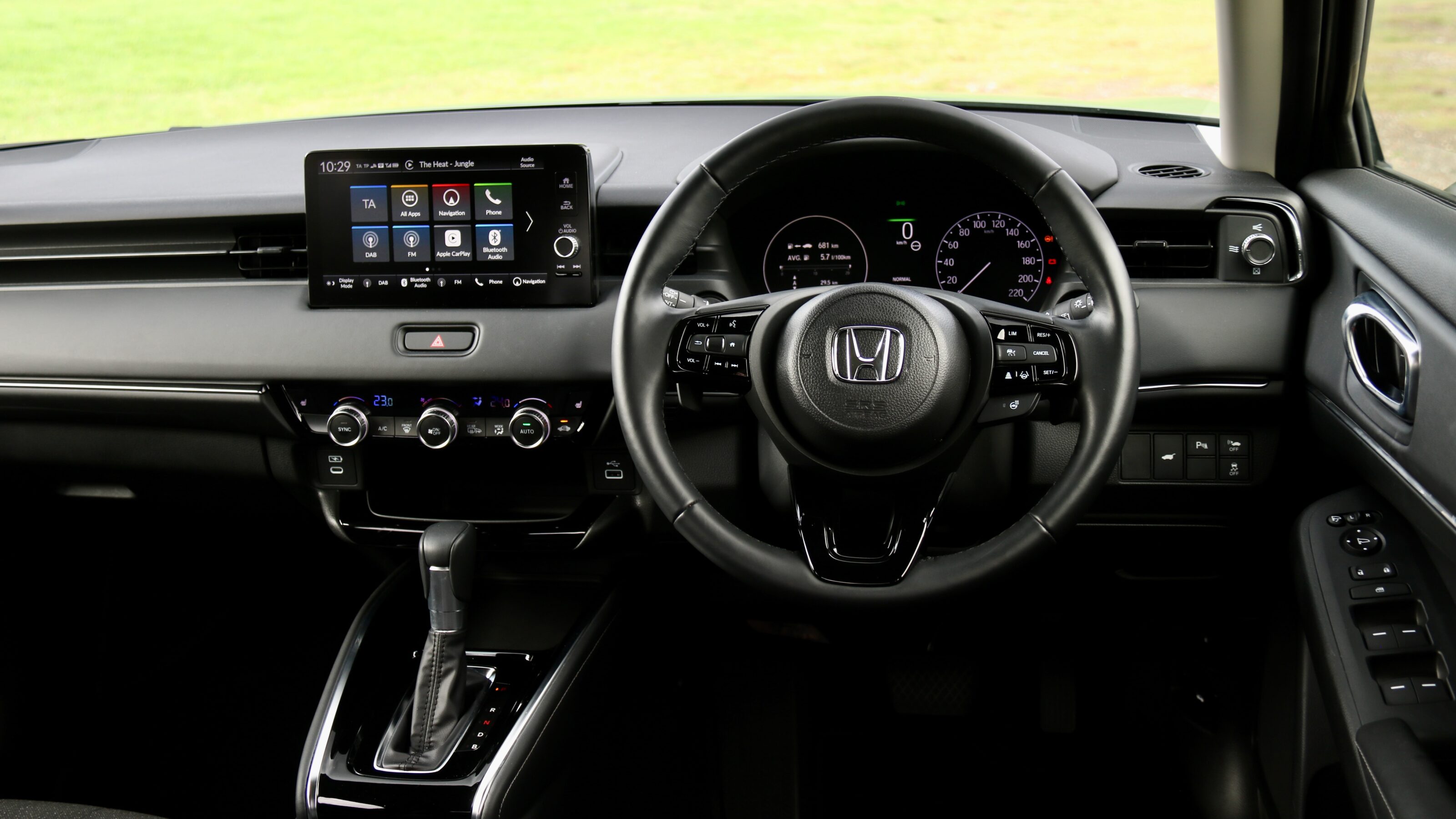

Aside from the lack of a fifth seat locally, the HR-V’s rear seat is arguably the best in class with ample legroom and headroom, and amenities like a central arm rest, bottle holders in the doors and – unfortunately in the top-spec hybrid only – rear air vents and two USB-C ports. But uniquely, Honda’s ‘Magic Seats’ allow the seat base to fold up or fold completely flat for trips to Ikea, expanding the average 304-litre boot to a large 1,274L, or more than Kona and CX-30.
All things considered, the updated Honda HR-V remains one of the best choices in the small SUV segment. Subtle updates have made it safer, better equipped and more refined to drive than before, while the hybrid’s real-world efficiency, stepped ratio gearbox and peppy performance are awesome. The lack of a fifth seat and spare wheel grates, but it’s otherwise very practical and if they’re a non-issue to you, the HR-V still presents great buying in the small SUV segment.
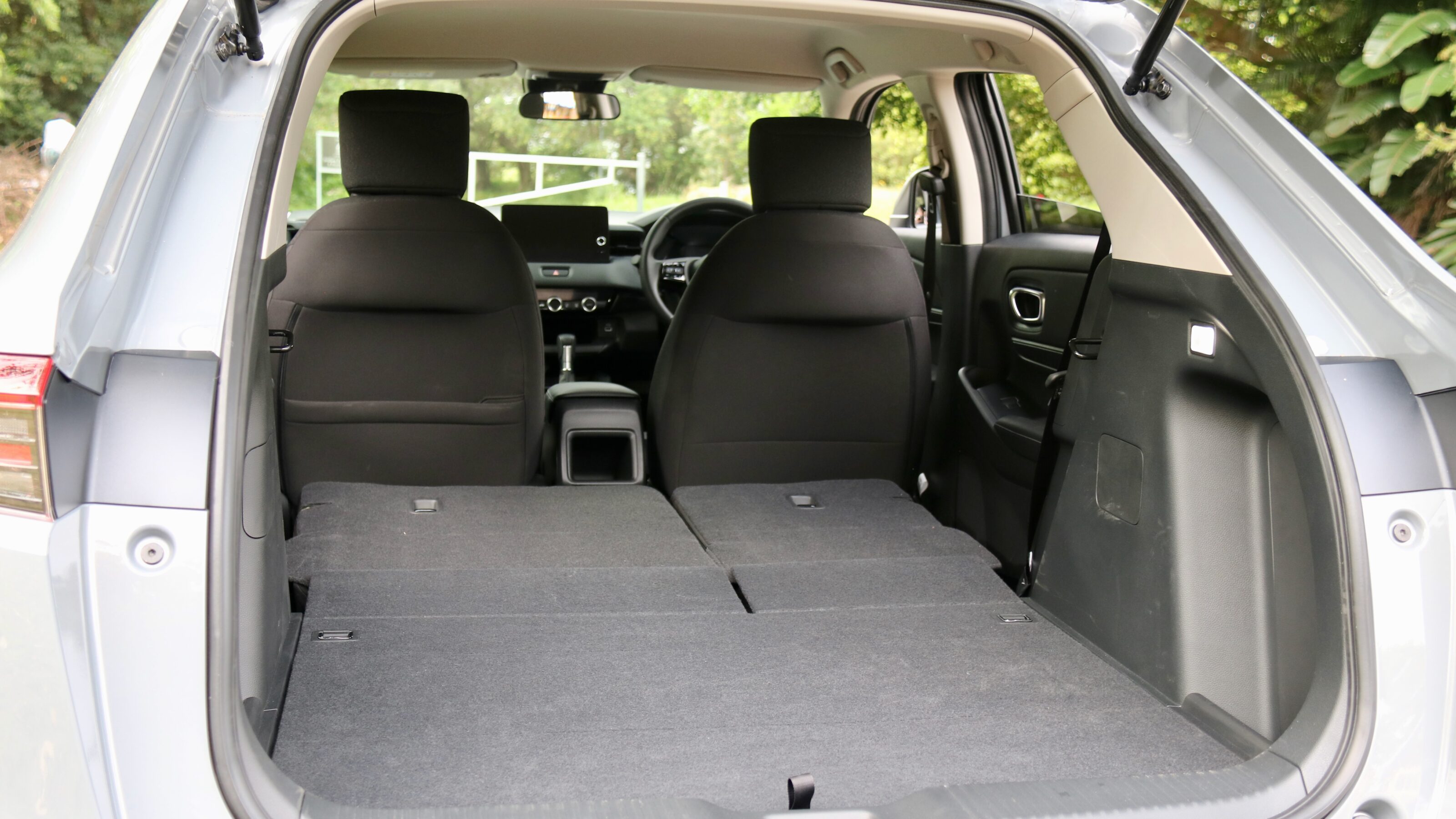
Essential specs
- Engine: 1498cc 4-cyl, DOHC, petrol or hybrid
- Max power: 89kW (petrol); 96kW (hybrid)
- Max torque: 145Nm (petrol); 253Nm (hybrid)
- Transmission: CVT automatic
- Economy: 4.3L/100km (hybrid); 6.2L/100km (petrol)
- Weight: 1267kg (petrol); 1382kg (hybrid)
- Price: from $32,900 drive away (Vi X); $42,900 (e:HEV L)
- On sale: Now
This article appears in the May 2025 issue of Wheels, on sale now.
Ford F-150
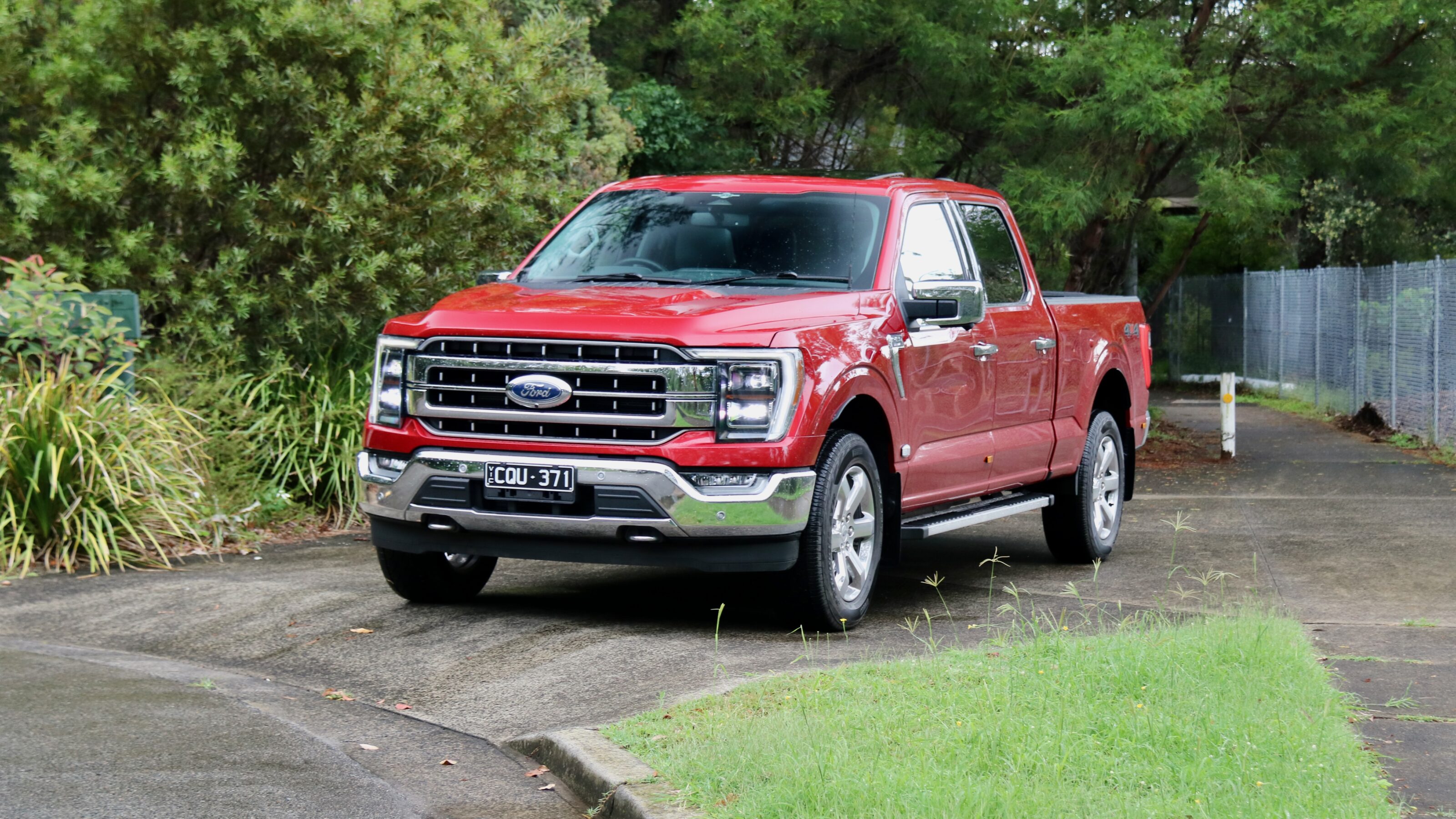
It’s been delayed until mid-2025, but the facelifted Ford F-150 will hit local shores this year. As before, it’ll be converted to right-hand drive locally by RMA Automotive and continue to feature a 298kW/678Nm 3.5-litre twin-turbo V6 as the only available engine.
Changes include a restyled front and rear and 12.0-inch infotainment and instrument screens right across the range (currently 8.0-inch in XLT). Speaking of the range, it’s yet to be confirmed but expect a flagship Platinum to join the current XLT and Lariat.
Another new option is the Pro Access Tailgate, which incorporates a swing door into the fold-down tailgate to allow easy access to the bed. Pricing will be revealed closer to launch.
Ford Ranger PHEV
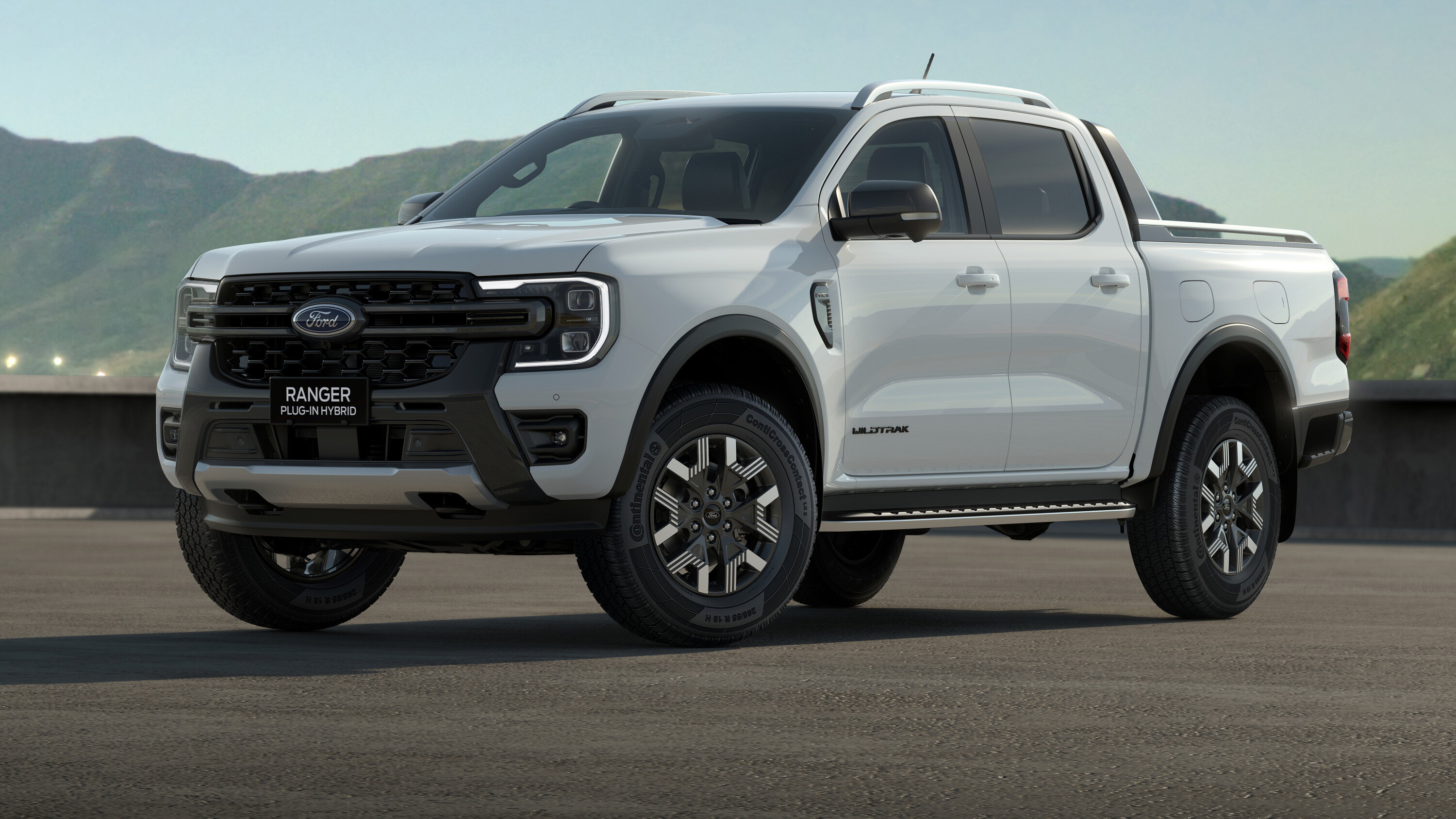
The Ford Ranger PHEV will join Australia’s growing electrified dual-cab segment in 2025 and we can now put a price to it. A four-strong line-up starts at $71,990 plus on-road costs for the XLT, raising in $4000 increments for the Sport and Wildtrak then jumping to $86,990 for the range-topping Stormtrak.
Equipment levels essentially mirror each variant’s diesel equivalent, with the obvious exception of the powertrain. The Ranger PHEV combines a 138kW/411Nm 2.3-litre turbocharged four-cylinder petrol engine with a 75kW electric motor for a total system output of 207kW/697Nm.
Claimed combined fuel consumption is 2.9L/100km and an 11.8kWh battery (usable) provides a maximum electric-only range of 49km. Charge time is four hours at the maximum AC rate of 3.5kW or just under seven hours on your typical powerpoint. The battery also feeds a trio of power outlets, a 2.3kW cabin outlet and a pair of 3.45kW outlets in the tray.
Maximum towing remains 3500kg and payload varies between 808-973kg depending on variant. The only question left now is how it drives.
Foton Tunland
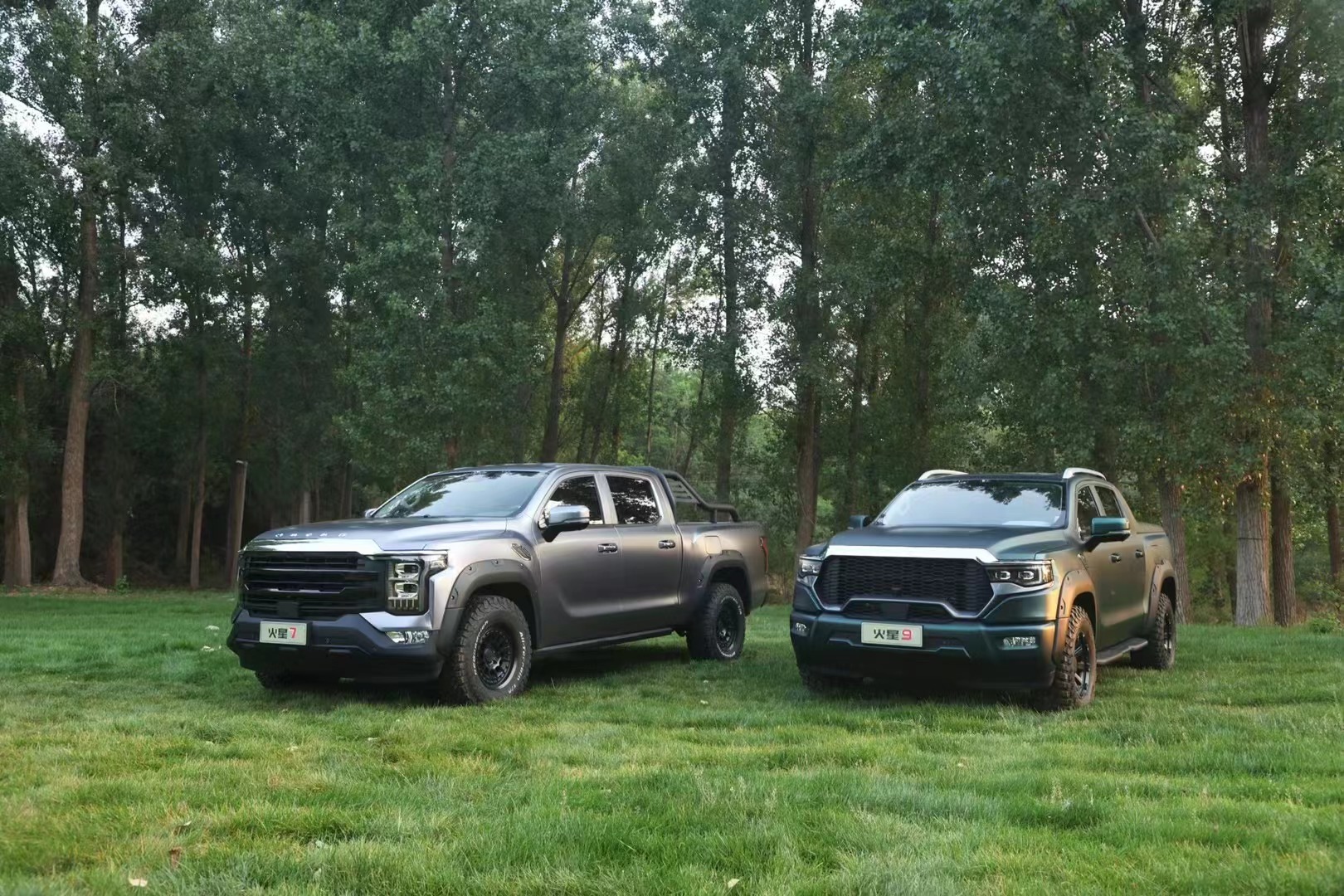
The Foton Tunland is a familiar nameplate in Australia but the new-generation dual-cab, offered in V7 and V9 variants, couldn’t be further from the bargain basement ute that was previously available a decade or so ago.
Concrete local details are currently scarce, but we do have some information. For starters, the V7 and V9 – the utes appear to be differentiated only by their exterior styling – are enormous.
Even the smaller versions measure 5517mm long with a 3355mm wheelbase, substantially longer than a Ford Ranger in both dimensions, while the larger versions expected to be offered locally are much closer to the Ford F-150, Toyota Tundra et al at 5797mm long on a 3505mm wheelbase.
The interiors are packed with leather, giant screens and extensive equipment lists, Foton claiming in a statement “an intelligent cockpit, plush seating and luxurious finishes that prioritise occupant’s comfort on every journey”.
Powertrains are currently the big unknown, the Tunlands offered with a 2.0-litre four-cylinder mild-hybrid turbodiesel in South Africa but with electrically-assisted petrols in its Chinese homeland. Expect pricing to significantly undercut the established players.
Geely Radar
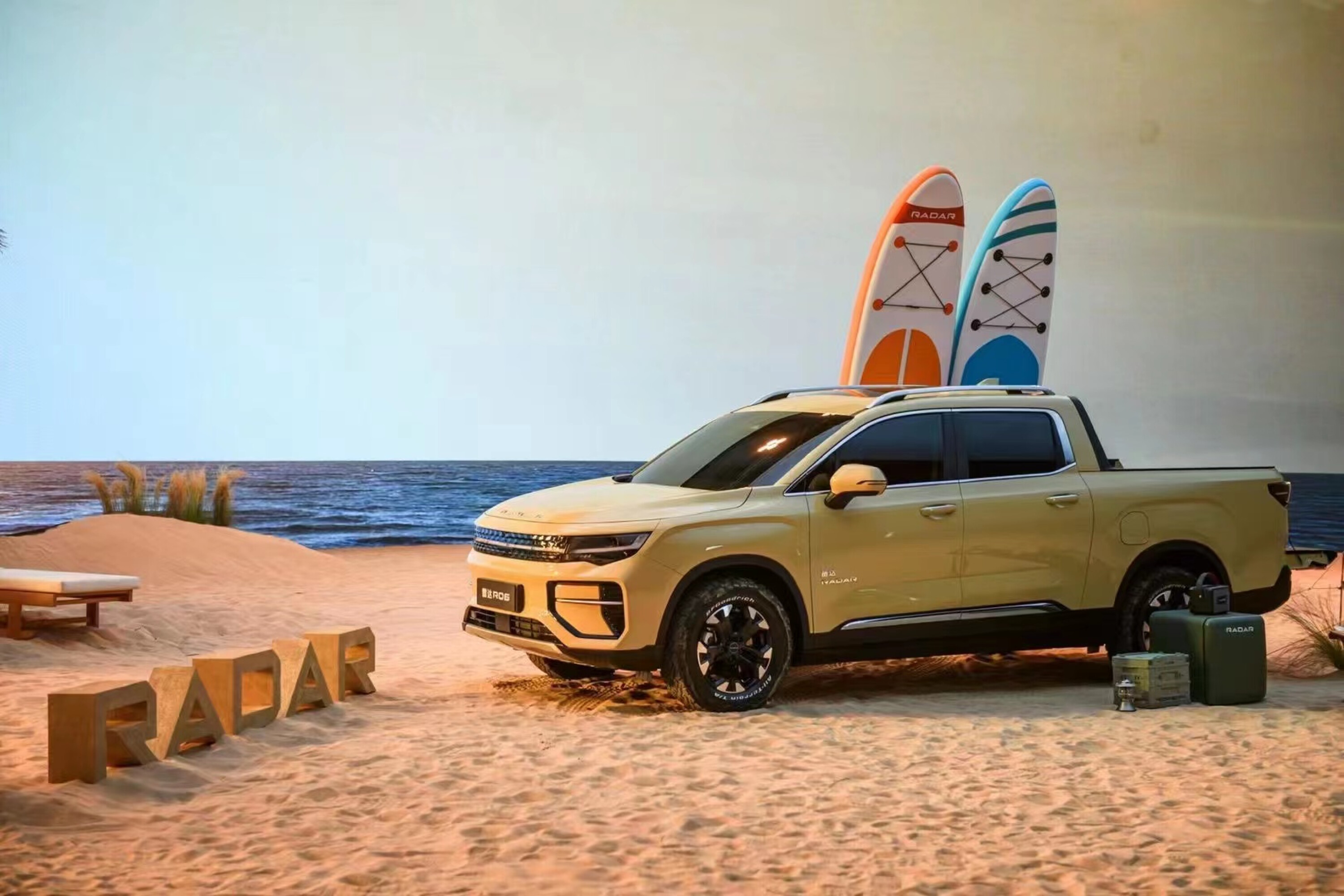
Geely has reestablished an Australian presence with the EX5 SUV, but it’s already confirmed plans to expand its local lineup with a ute. A ute with a difference, however.
The most likely candidate is the Radar RD6, known as the Riddara RD6 in export markets, an all-electric dual-cab built on a monocoque platform rather than a more traditional ladder-frame chassis.
Despite this, the RD6 4×4 claims a maximum towing capacity of 3000kg and 865kg payload along with an 815mm wading depth and 225mm of ground clearance, making it more than just a city slicker.
The Riddara RD6 – which would likely be rebadged a Geely in Australia – is already produced in right-hand drive for Thailand, where it’s also offered in rear-wheel drive form with a choice of 63kWh or 86kWh battery packs.
GWM Cannon Alpha – Out Now
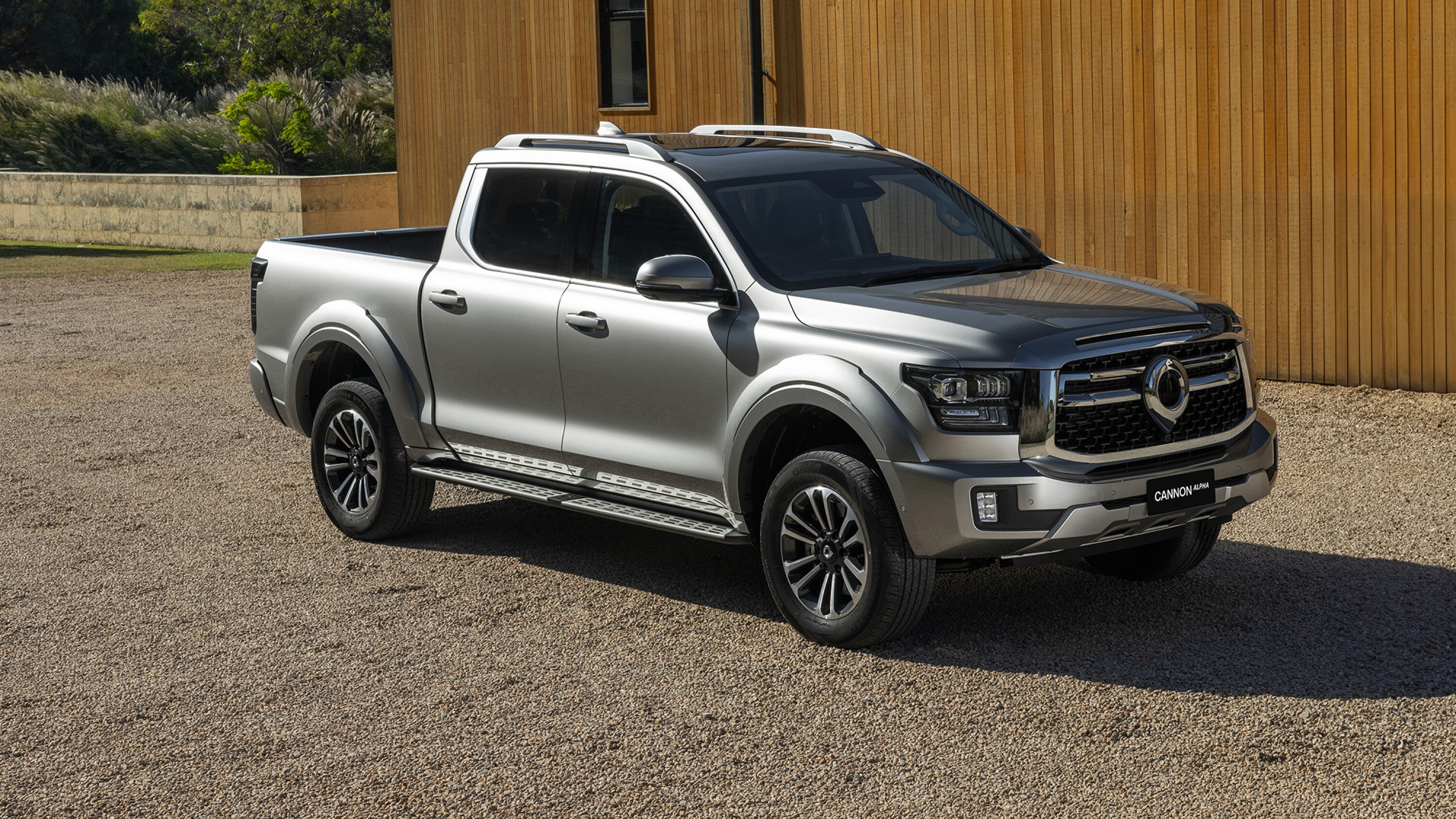
A bigger brother to the existing Cannon, the GWM Cannon Alpha is a two-tier proposition. The big rig – measuring 5455mm long, 1991mm wide and 1924mm tall – is offered from $51,990 driveaway with a 135kW/480Nm 2.4-litre four-cylinder turbodiesel, but it’s also part of the new wave of electrified utes arriving in Australia.
The Cannon Alpha Hybrid is $64,990 driveaway and teams a 2.0-litre four-cylinder turbo-petrol engine with an electric motor and small lithium-ion battery for combined outputs of 255kW/648Nm. Claimed combined fuel consumption is 9.8L/100km.
There’s plenty of equipment, diff locks front and rear and 3500kg towing capacity, but maximum payload is only 735kg. It’s triple sevens in terms of aftersales, with seven years’ coverage for warranty, roadside assistance and capped-price servicing.
GWM Cannon Facelift – Out Now
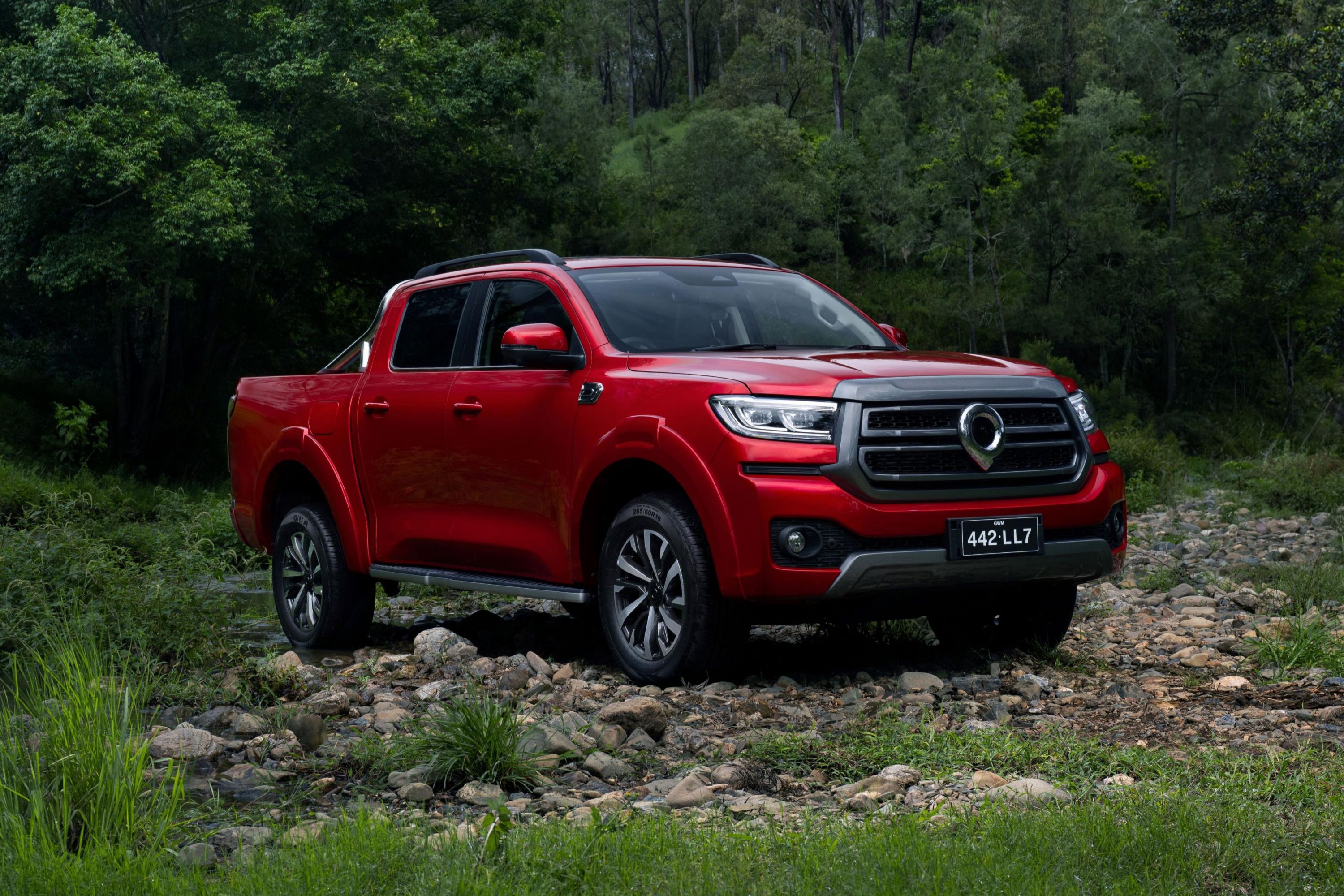
The upgrades for the new GWM Cannon have been comprehensive to say the least. As well as visual revisions that eliminate a lot of the gaudy chrome, there’s now a 2.4-litre turbodiesel and nine-speed auto combo, increasing outputs from 120kW/400Nm to 135kW/480Nm.
Inside there are new screens, a flip-or-fold rear seat, cooled wireless phone charger and plenty of kit, especially towards the top of the range, while maximum towing capacity has increased to 3500kg and the seven-year warranty/five-year roadside assistance combo carries over.
One thing that hasn’t changed – or at least not much – is the pricing. The rationalised four-tier range starts at $40,490 driveaway for the Lux, rising to $43,490 for the Ultra, $45,490 for the Vanta and $49,990 for the off-road focused XSR.
Ineos Grenadier Quartermaster – Out Now
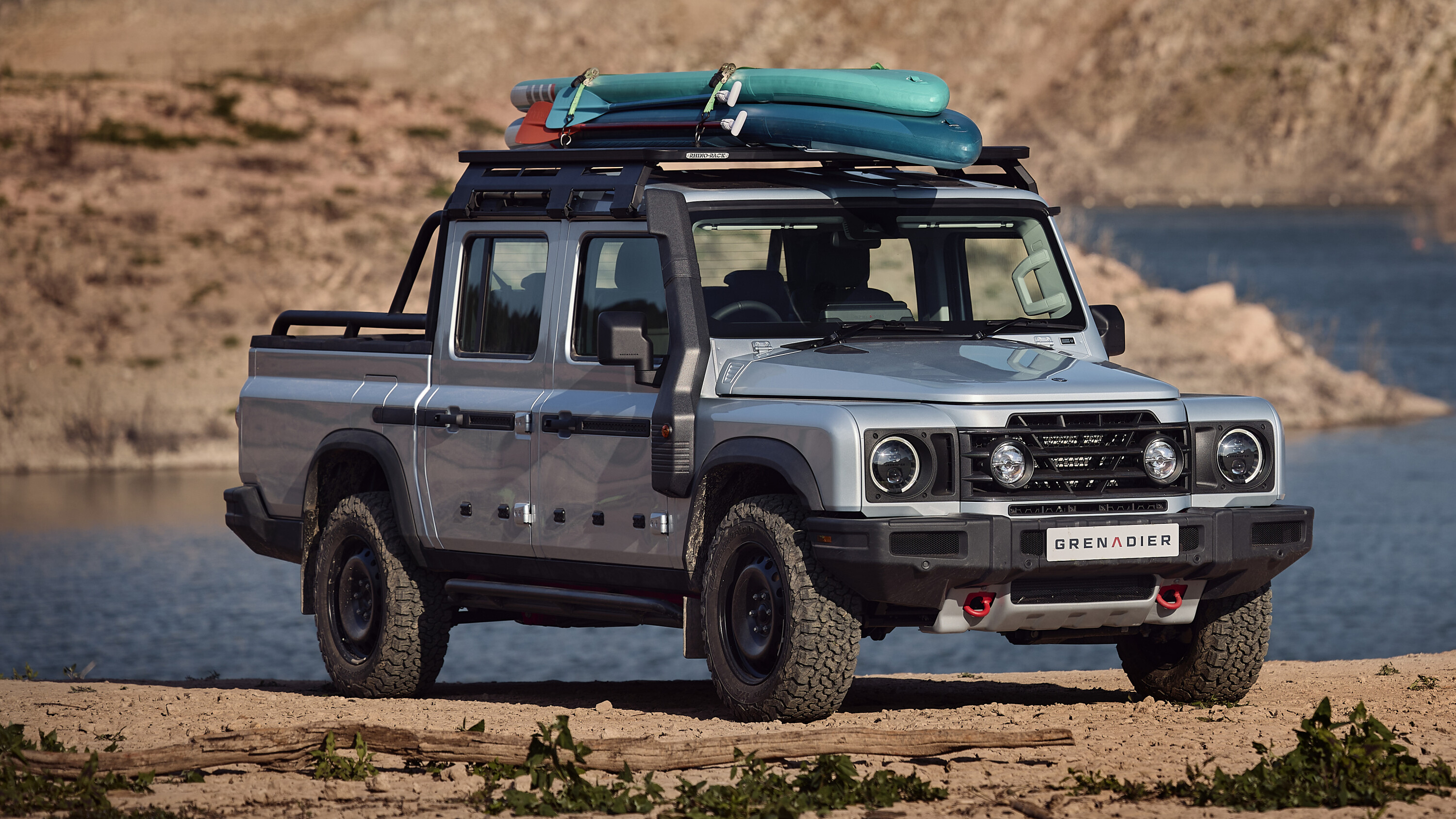
The Ineos Grenadier lineup has doubled with the arrival of the Quartermaster ute. It lengthens the wheelbase by 305mm and adds a tray capable of accommodating a 1200 x 800mm European pallet. Maximum payload is 907kg for the petrol and 832kg for the diesel.
Pricing is very similar to the wagon starting at $102,000 plus on-road costs for the cab-chassis or $105,000 with a tray fitted, rising to $118,000 (+ORCs) for the Trialmaster and Fieldmaster variants.
Mechanically, the ute mirrors the wagon, with coil-sprung live axles front and rear and a choice of BMW-sourced 3.0-litre inline-six petrol (210kW/450Nm) or diesel (183kW/550Nm) engines with a ZF eight-speed automatic gearbox.
JAC T9 – Out Now
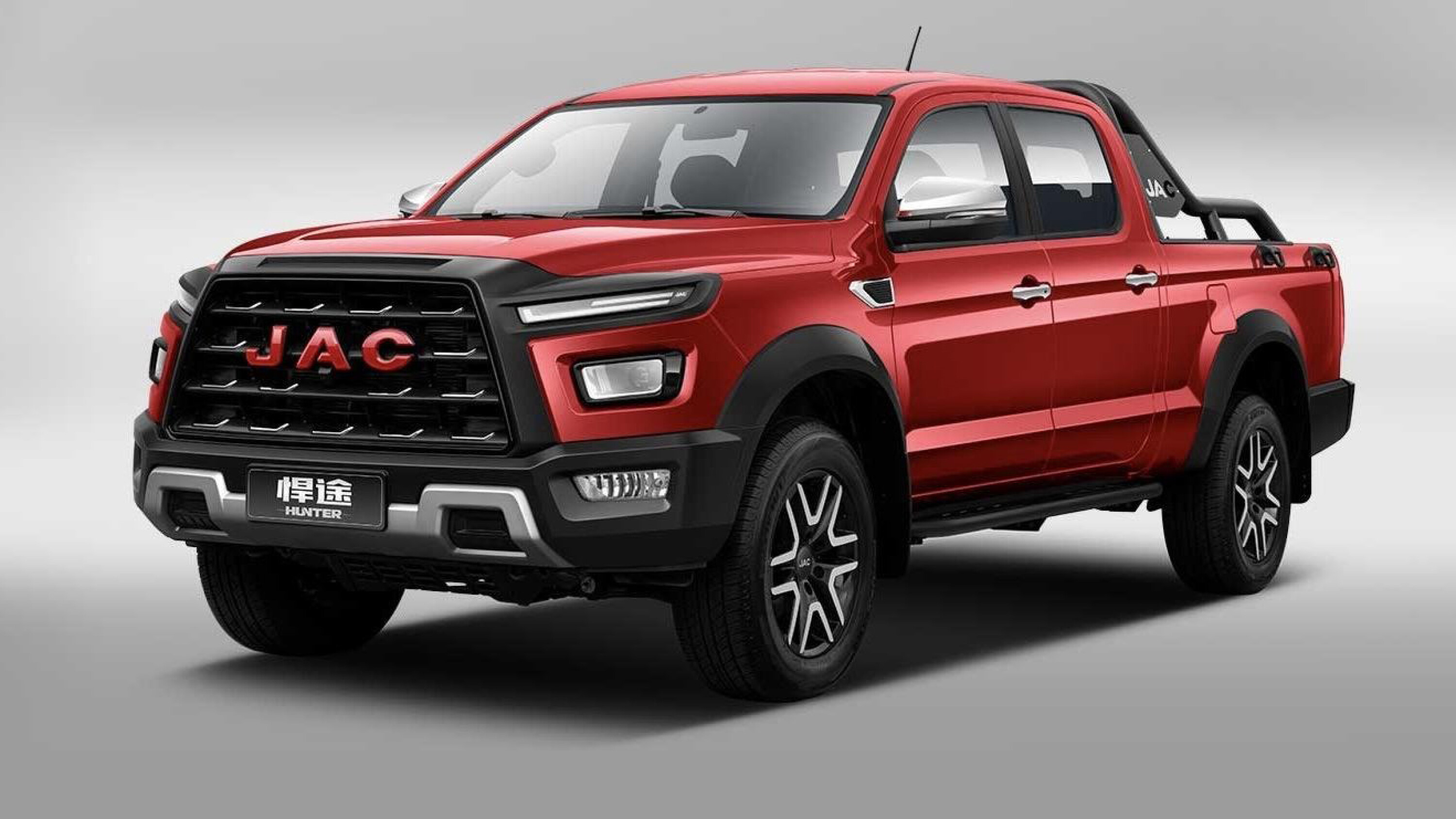
As the established dual-cab players have increased in price, it’s created space for new entrants to slot in underneath, like the GWM Cannon, LDV T60 and new JAC T9. It’s landed in Australia starting at $42,662 plus on-road costs rising to $45,630 (+ORCs) for the up-spec Haven.
There’s no arguing with the value proposition, with plenty of equipment, a five-star ANCAP safety rating, seven-year warranty and roadside assistance and a large tub. Max towing is slightly below the class leaders at 3200kg but there’s up to 1045kg of payload available.
Under the bonnet is a 120kW/410Nm 2.0-litre four-cylinder turbodiesel attached to an eight-speed automatic with claimed combined fuel consumption of 7.6L/100km. There’s disc brakes front and rear and a locking rear differential for added traction off road.
Jeep Gladiator
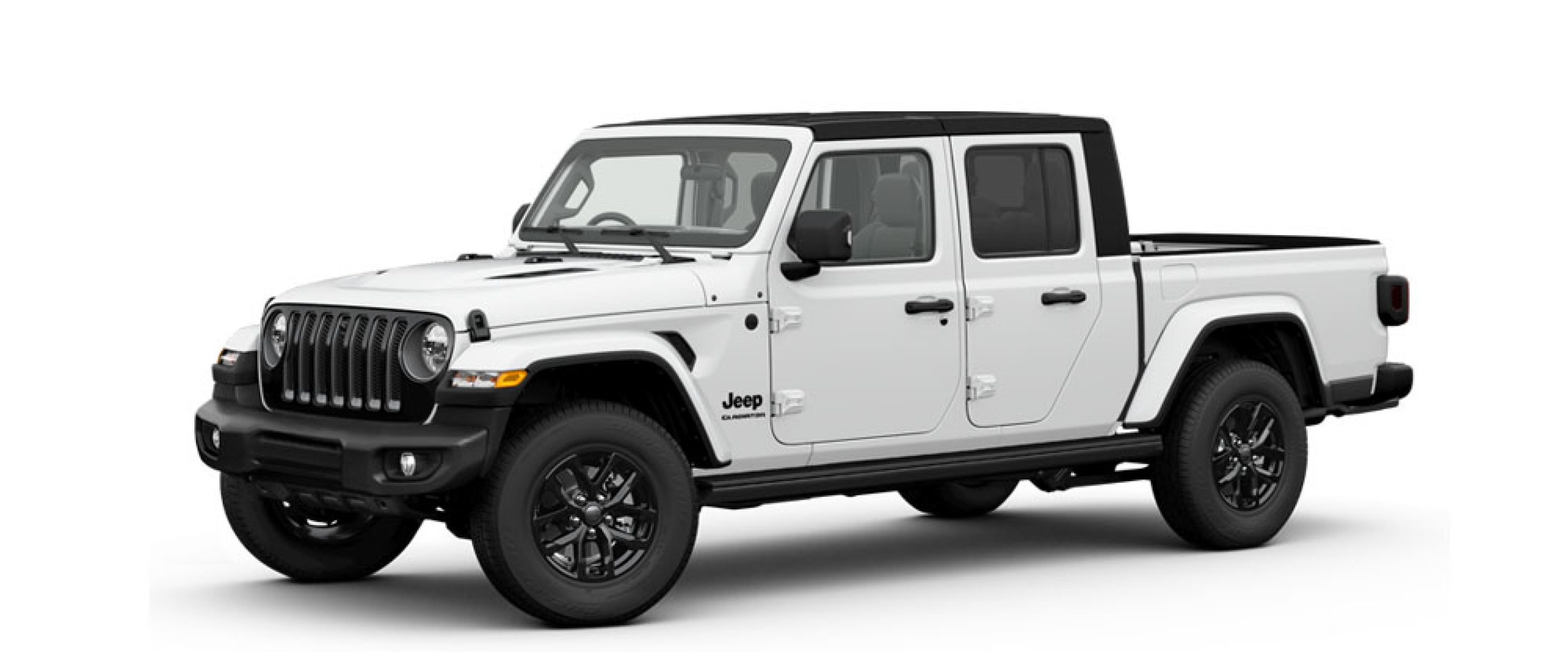
Unlike its Wrangler sibling, the facelifted Jeep Gladiator will continue with the 209kW/347Nm 3.6-litre Pentastar V6 rather than downsizing to a 2.0-litre four-cylinder turbo-petrol.
It does, however, score the revised styling, updated interior with much larger (12.3-inch) infotainment system and additional safety equipment.
Kia Tasman
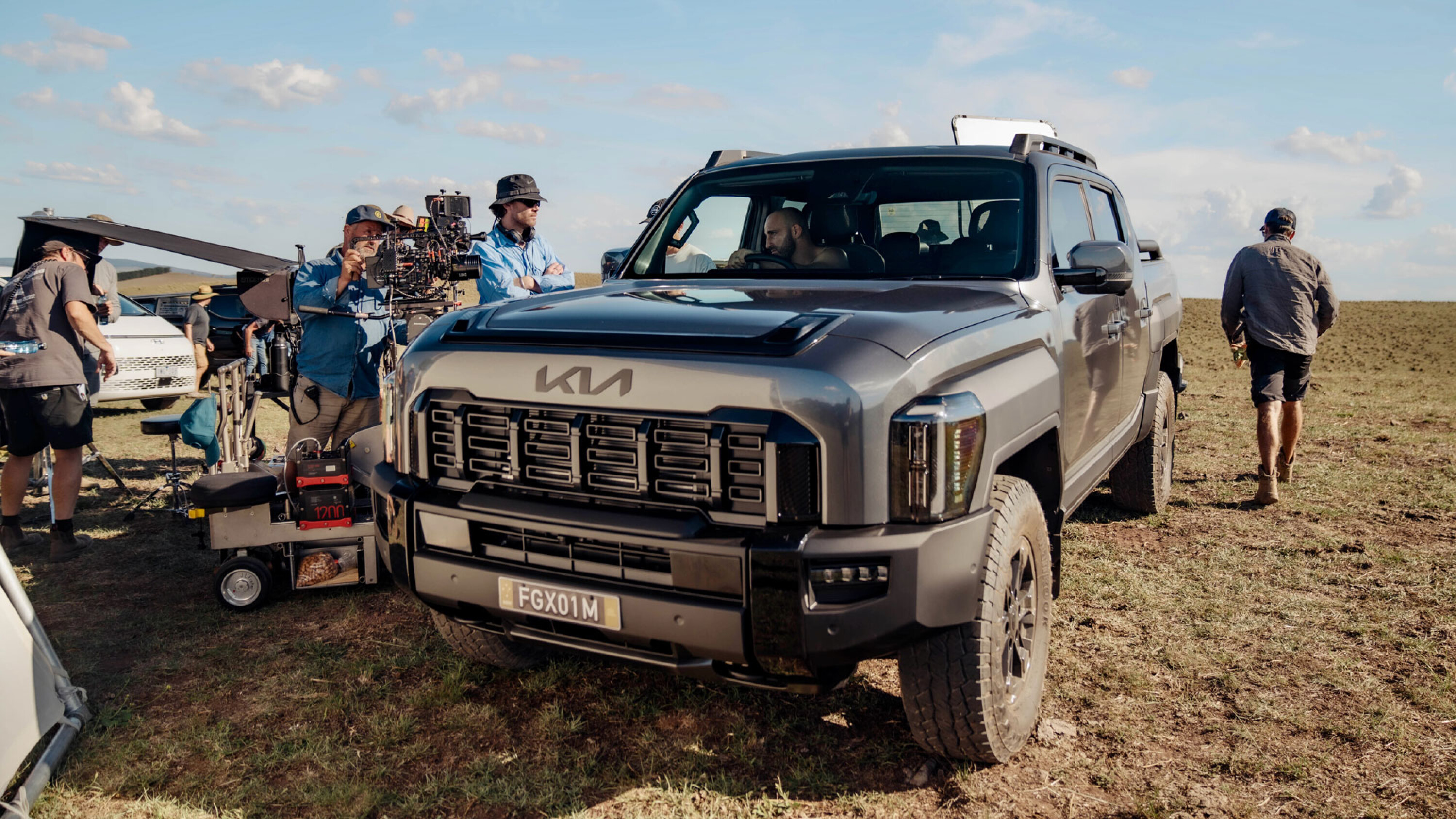
One of the most anticipated and hyped vehicle releases in recent memory, if all goes to plan the Kia Tasman will quickly entrench itself as one of Australia’s top 10 selling vehicles.
Kia hasn’t strayed too far from the class norm with the Tasman’s fundamentals, with a ladder-frame chassis, leaf-sprung, live axle rear end and a 2.2-litre four-cylinder turbodiesel engine producing 154kW/441Nm.
Three variants will be available, the base, X-Line and off-road focused X-Pro, the latter featuring 17-inch wheels with more aggressive tyres, extra ground clearance and an electronically locking rear differential.
Inside, Kia looks to offer a more car-like experience, with its familiar dual widescreen arrangement, extra storage bins, dual wireless charging pads and optional Harmon/Kardon stereo.
LDV eTerron 9 and Terron 9

The LDV eT60 was Australia’s first all-electric ute, but its forthcoming eTerron 9 will be a much more convincing proposition. Government approval documents have given us our first look at the specifications, with a rear-wheel drive model offering a single 200kW motor, while the all-wheel drive adds another 125kW on the front axle.
A more conventional Terron 9 will also be available using a 164kW 2.5-litre four-cylinder turbodiesel. Both Terrons will sit towards the larger end of the typical dual-cab sector, measuring 5500mm long, 1997mm wide and 1860mm tall on a 3300mm wheelbase.
Both models are expected to arrive in Q2, 2025 and will be sold alongside the existing T60.
Mazda BT-50 – Out Now
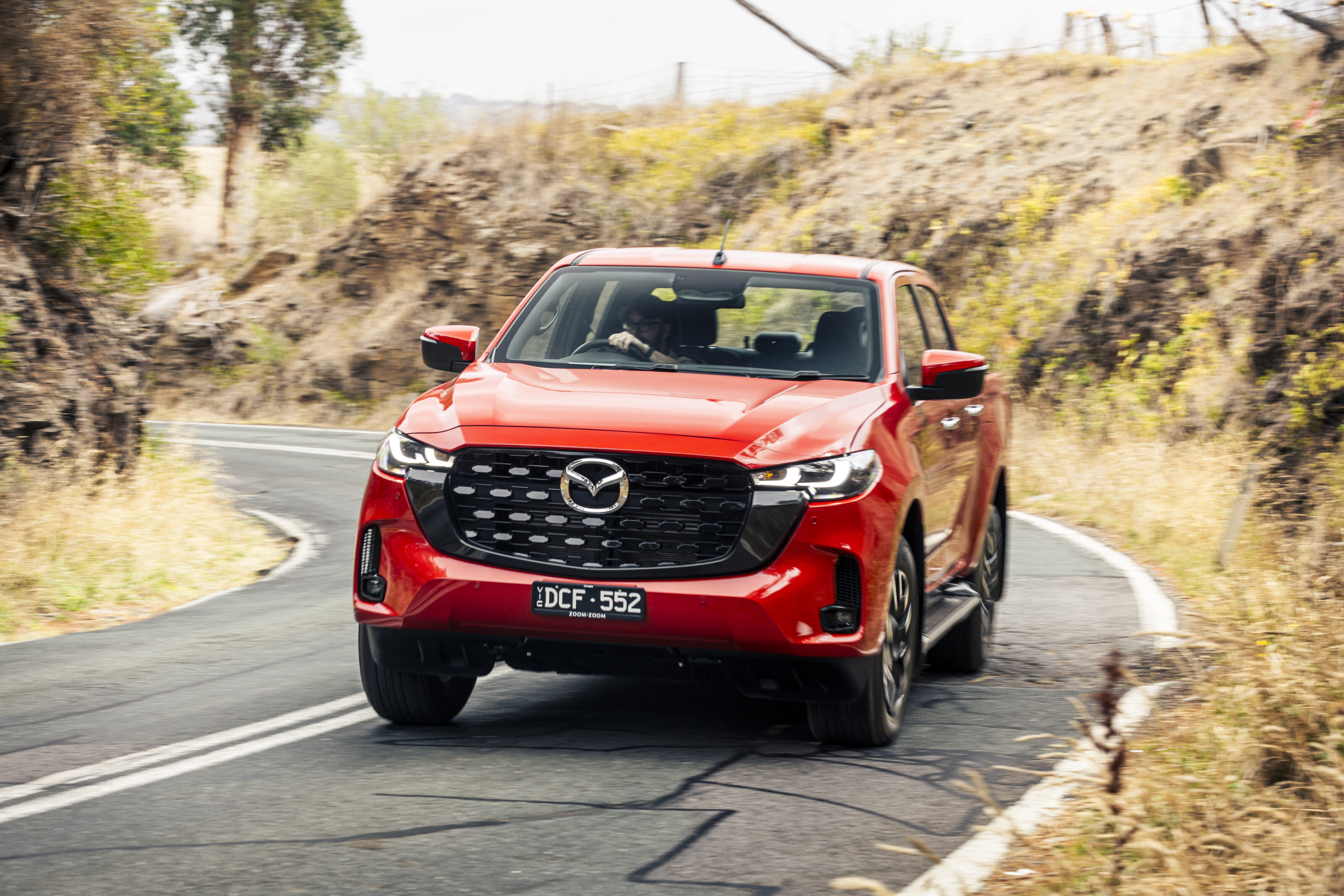
It’s nip-and-tuck time for the Mazda BT-50 with a mild exterior refresh covering bigger changes inside. Larger infotainment and instrument screens, wireless Android Auto (joining Apple CarPlay) and USB-C rather than -A ports headline the interior updates, while new stereo cameras enhance the ability of its active safety features.
Mechanically, it’s business as usual bar the addition of a ‘Rough Terrain’ mode that retains traction control when in low-range. Speaking of range, the BT-50 offering is extensive, from $36,400 (+ORCs) for a 1.9-litre 4×2 XS cab-chassis, right up to $71,500 (+ORCs) for the flagship SP.
Mitsubishi Triton Cab-Chassis
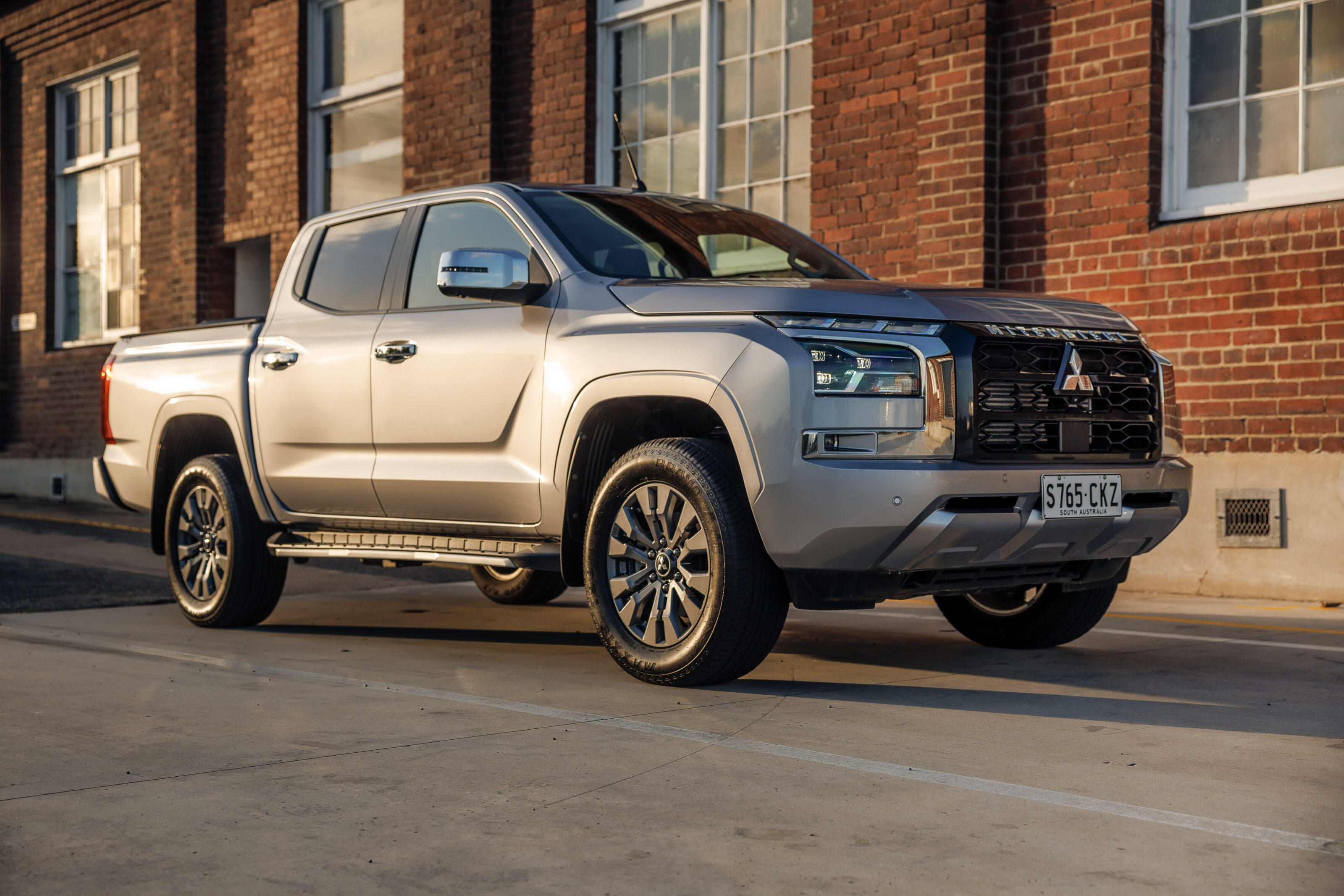
The Mitsubishi Triton range will expand with the arrival of cab-chassis variants towards the end of Q1, 2025. While officially unconfirmed, the range has been supplied to Redbook with the cab-chassis to be offered in GLX, GLX+, GLS and GSR guises.
Only 4×4 will be offered, with the GLX also introducing a six-speed manual to the range. This is the entry-level cab-chassis at $47,240 (+ORCs), with the GLX auto, GLX+, GLS and GSR offered at $49,490, $51,990, $57,540 and $61,540 respectively, with all prices exclusive of on-road costs.
MG U9

Announced at the Melbourne Motor Show, MG Motor Australia launch its highly anticipated U9 ute to arrive in Australian later in 2025.
The dual-cab, 2.5-litre, four-cylinder turbo-diesel U9, producing 160kW power and 520Nm of torque, is a milestone for the rejuvenated marque, which understands any self-respecting car brand in the Australian market must offer a commercial ute – the second-highest selling category in Australia.
The U9 will also be sold under the LDV brand as the Terron 9.
It will be backed by MG’s impressive 10-year/250,000km warranty.
RAM 1500
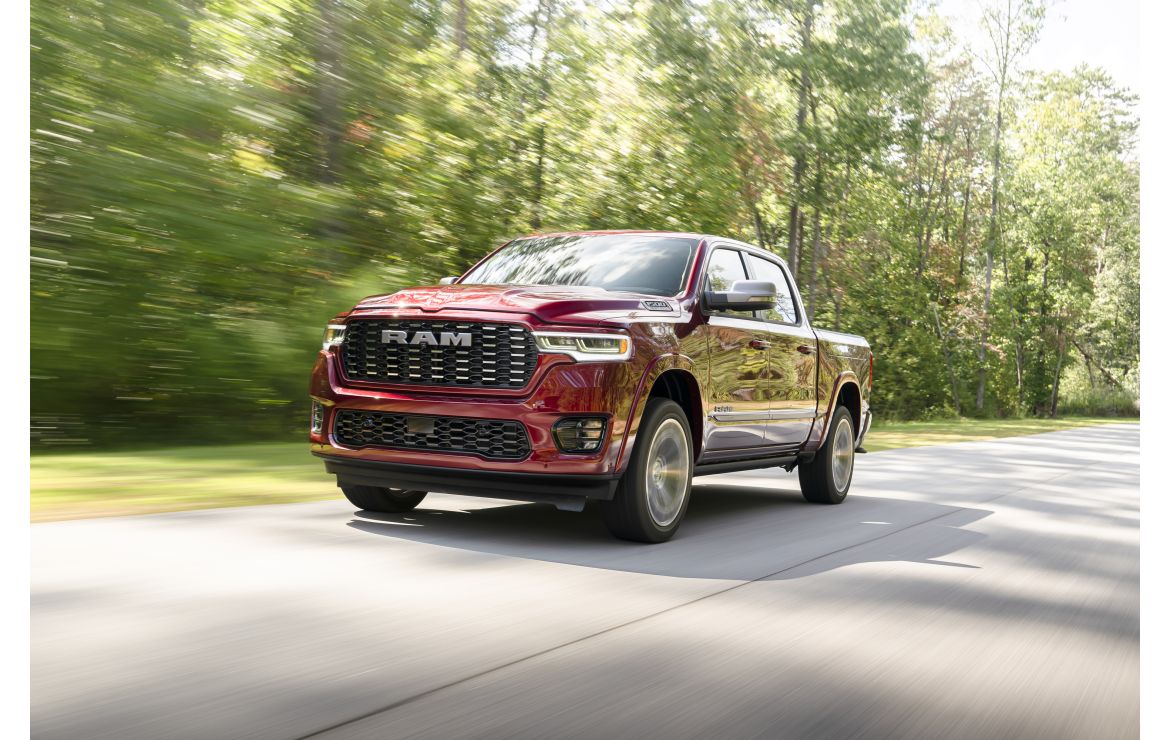
The big change with the arrival of the facelifted 2025 RAM 1500 will be under the bonnet. The long-serving and much-loved V8 is gone, replaced by the ‘Hurricane’ 3.0-litre twin-turbo V6, driving all four wheels via an eight-speed automatic gearbox.
In Big Horn (short- or long-wheelbase) and Laramie guise, it will produce 313kW/636Nm, while the flagship Limited will receive a high-output version of the engine developing 403kW/706Nm.
Pricing and exact specifications will not appear until closer to its local release, but the facelifted 1500 will be identifiable by revised styling and a new interior with a giant portrait infotainment screen of up to 14.5 inches and an optional 10.25-inch passenger display.
Toyota HiLux

It’s unlikely to hit local shores until 2026, but 2025 should give us our first look at the new generation Toyota HiLux, replacing the eighth-generation that’s now been on-sale for a decade.
At this stage information is scarce but reports out of Japan suggest the new HiLux may actually be a heavily-revised version of the current car, retaining the IMV platform, rather than adopting the new TNGA chassis that underpins everything from the 300 Series to the Prado to the Tundra.
It’s likely to be a similar story under the bonnet, with the mild-hybrid version of the 2.8-litre four-cylinder turbodiesel continuing to do service, albeit with an eight-speed automatic rather than the current six-speeder.
Regardless, with another decade-long lifecycle, the ninth-generation HiLux will certainly adopt alternative powertrains, whether that be greater hybrid assistance, all-electric, hydrogen or all of the above.
Toyota Tundra – Out Now
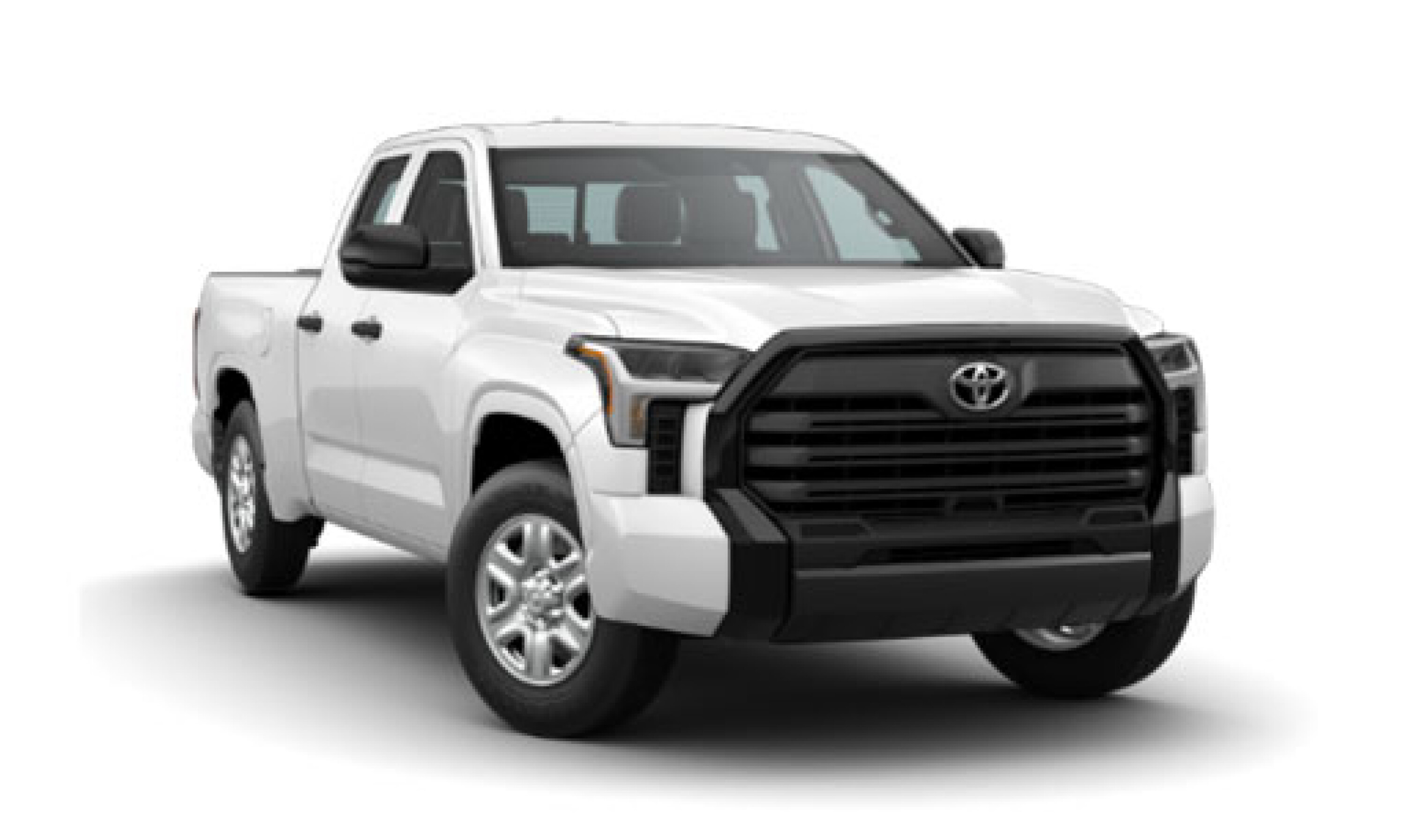
It’s had a protracted gestation, but the Toyota Tundra is now available to Australian customers, priced at $155,990 plus on-road costs.
Converted to right-hand drive by Walkinshaw Automotive using componentry from the 300-Series LandCruiser, the Tundra uses a hybrid-assisted 3.5-litre twin-turbo V6 to produce a combined 326kW/790Nm through a 10-speed automatic.
Its key advantage over smaller utes like the Toyota Hilux, Ford Ranger and Isuzu D-Max is a maximum braked towing capacity of 4500kg, though payload is limited to 736kg.
Inside, heated and ventilated leather seats, a 12-speaker stereo, dual-zone climate control, digital rear-view mirror and a pair of giant screens for the infotainment and instruments help justify the substantial price tag.